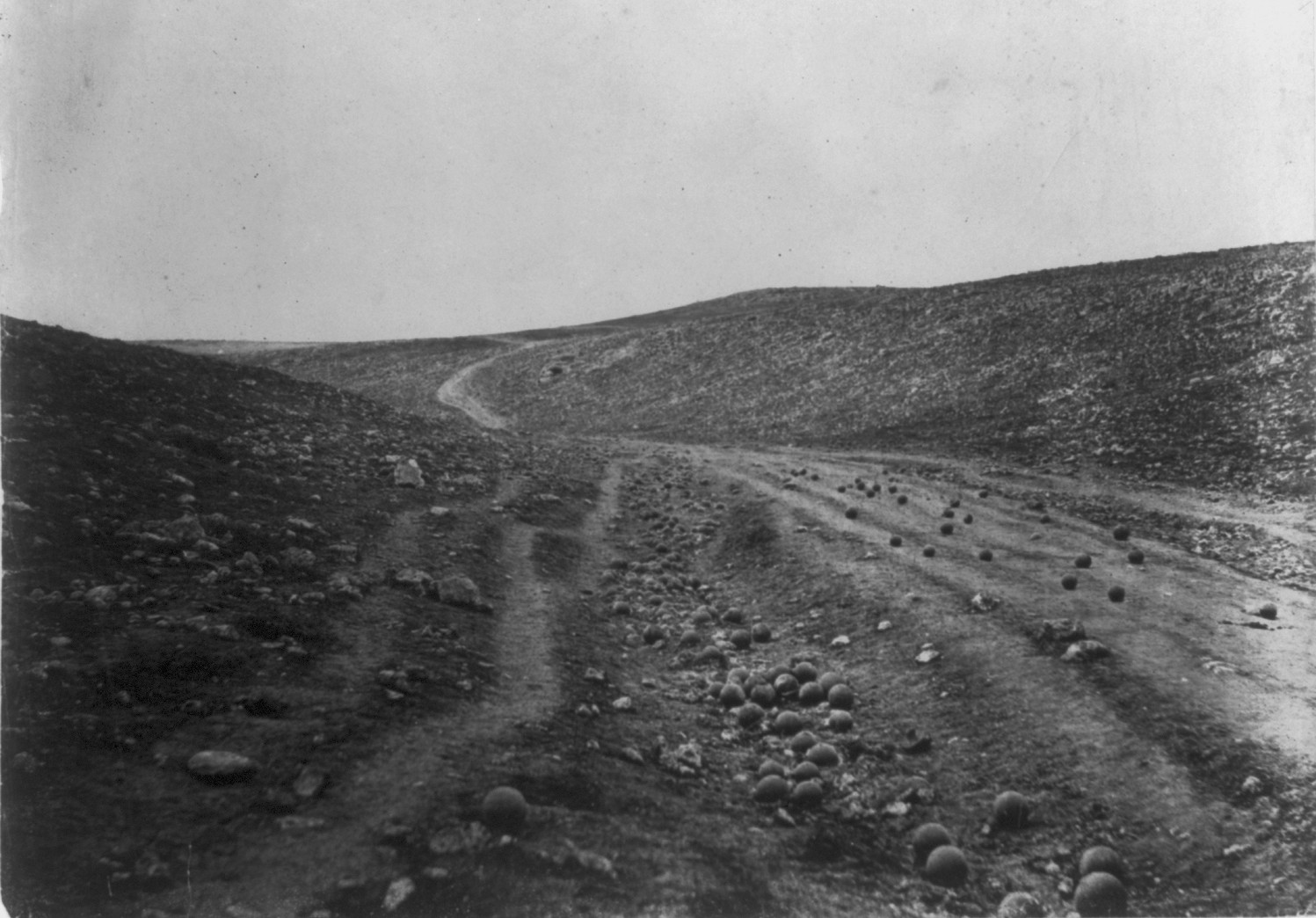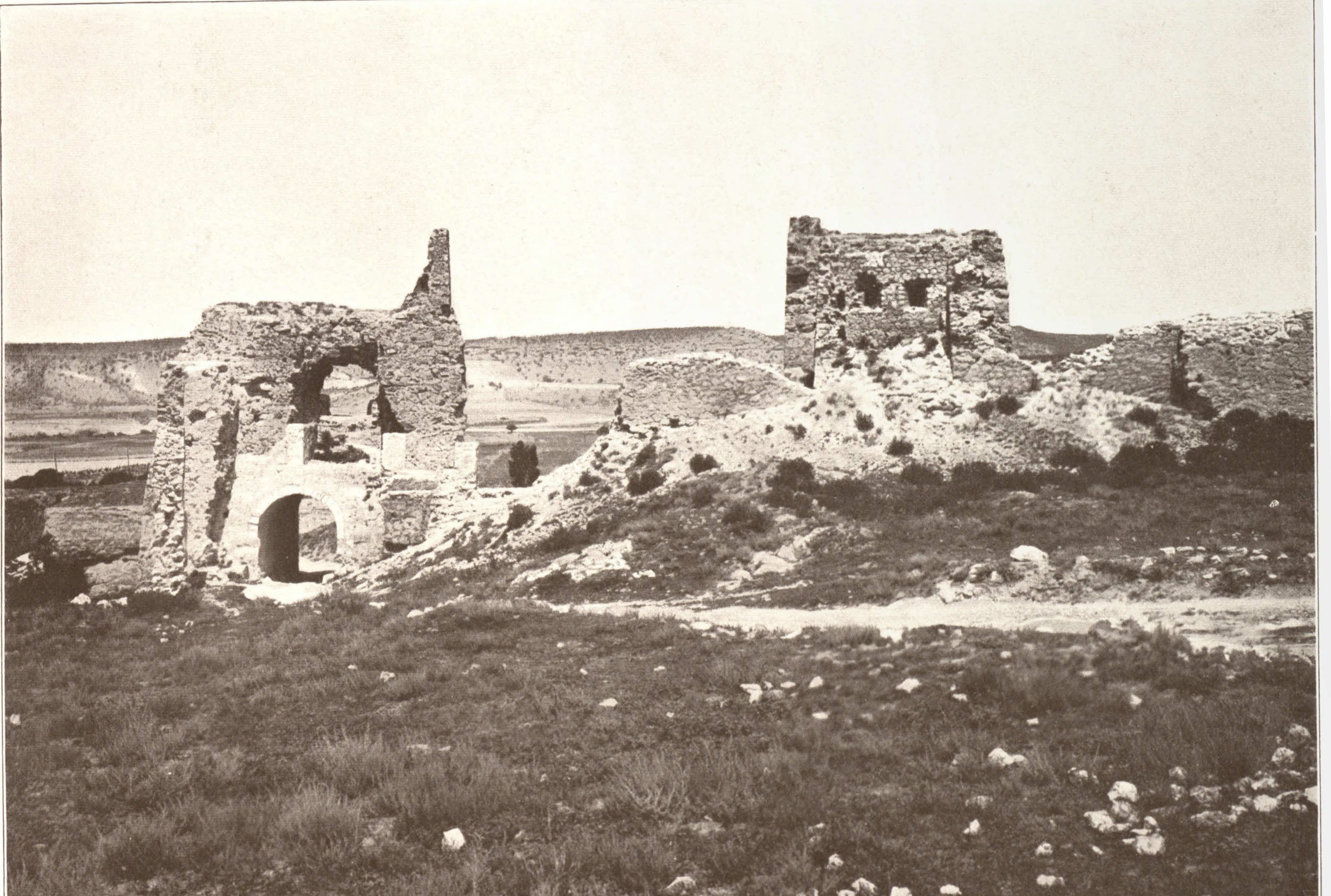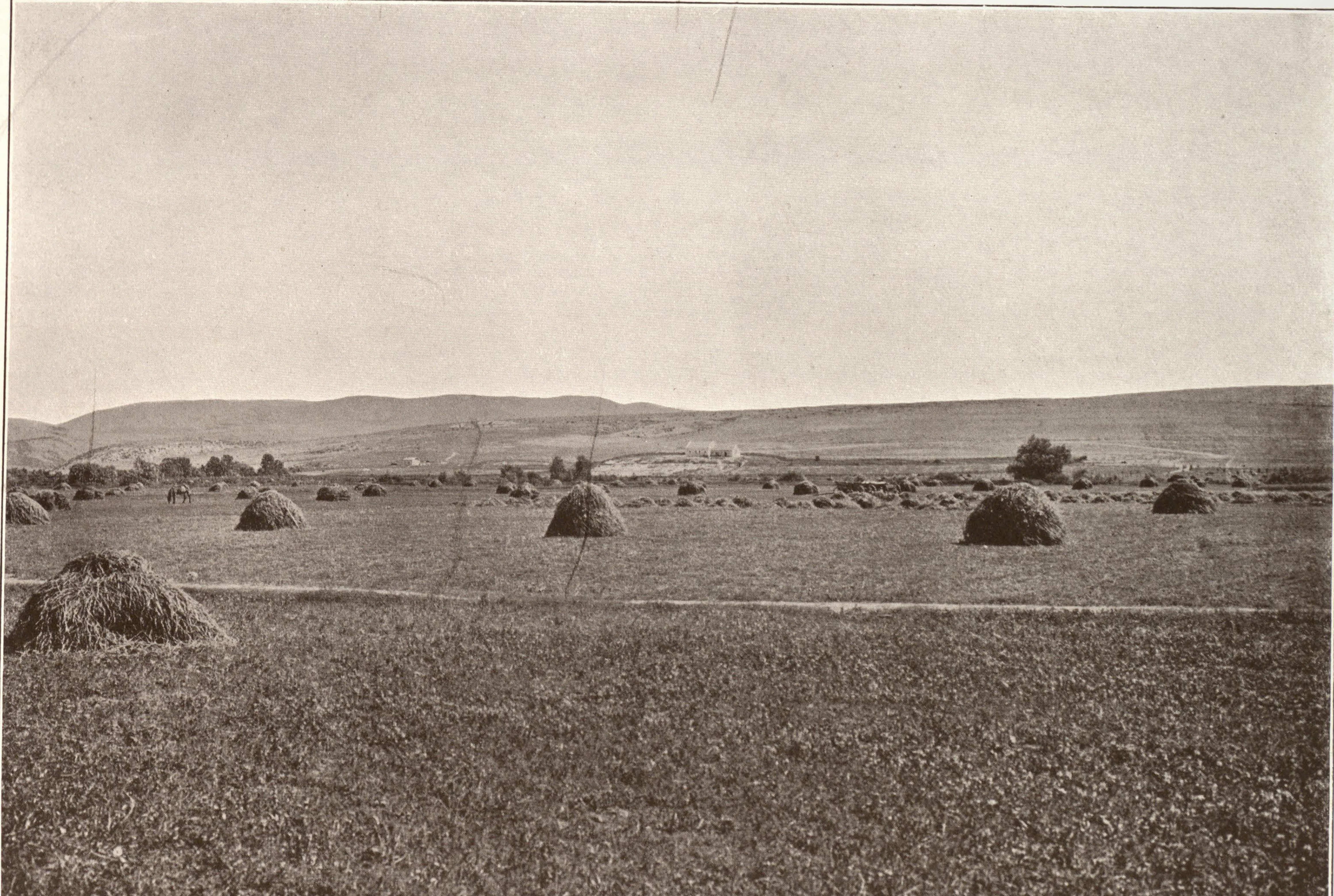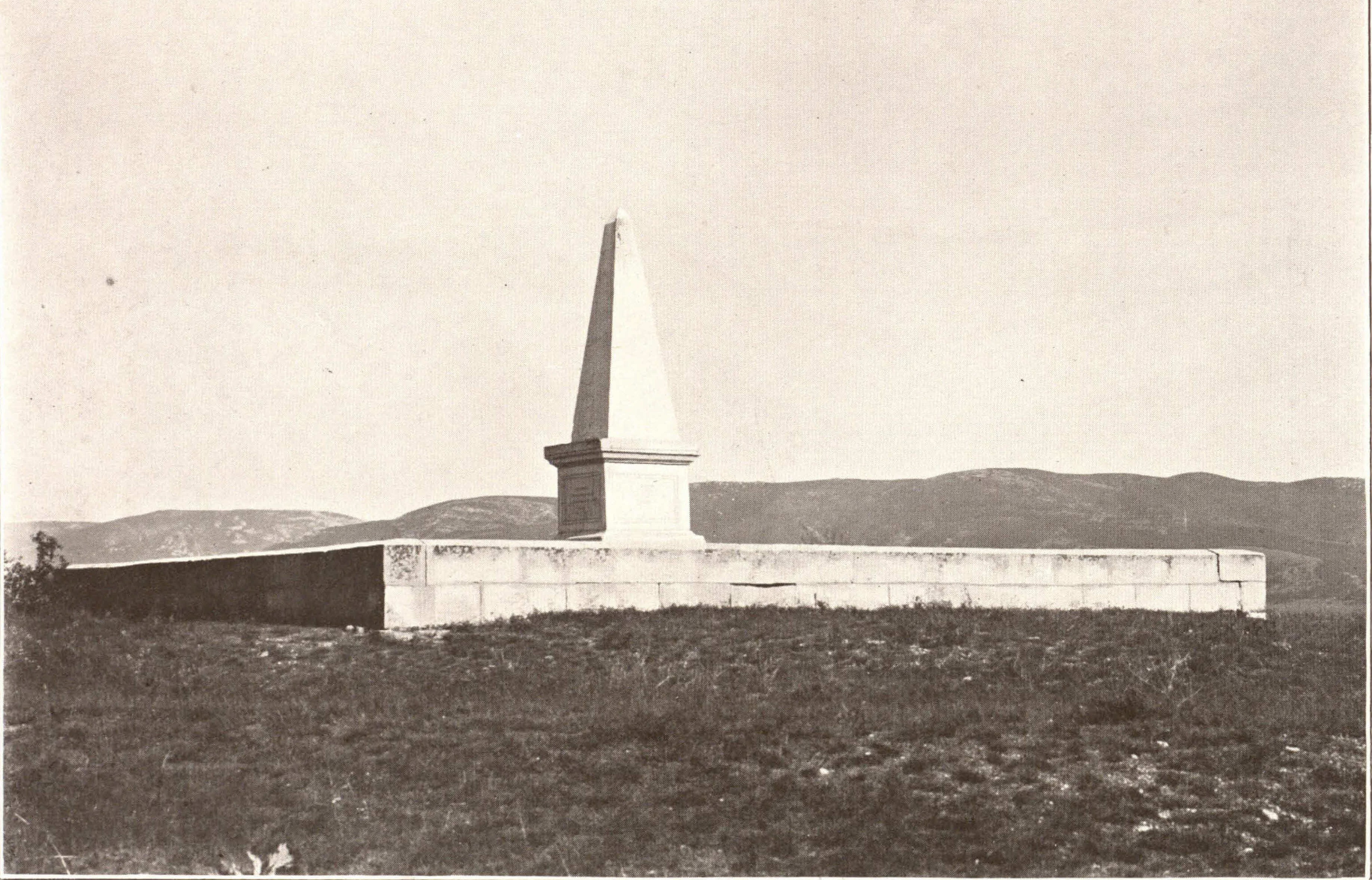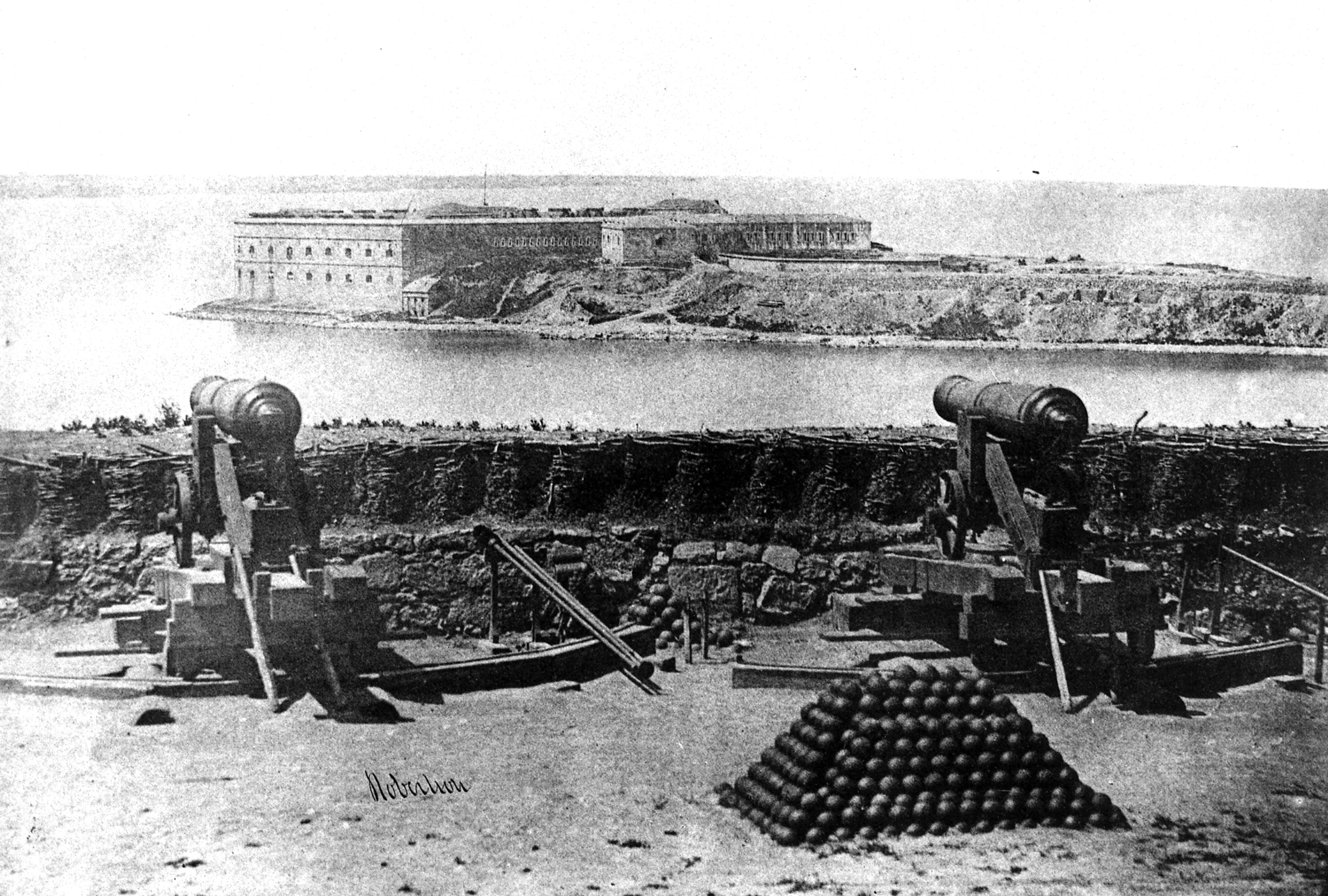Crimean War Photography
The Crimean War was the first conflict to be documented by photographers in the modern sense, and where war photography was born as a genre. Historical events ceased to be portrayed by painters and engravers, and the depiction of reality was passed into the hands of the new “truthful” medium.
The first photographer to be “assigned” to cover the war using the new revolutionary technology was Roger Fenton, from Great Britain.
The birth of war photography also bore with it the controversies of the genre: who commissions the assignment? What purpose is the photographer serving? How said purpose influences the portrayal of reality? Are the scenes true or staged?
Bankrolled by a Manchester based publishing firm and with a blessing from Prince Albert, Fenton went to Crimea as an “embedded” photographer with the British Army with a specific task: providing visual evidence to offset the general unpopularity of the war and controvert the critical reports of The Times of London which described the gross inefficiency of the military leaders at war.
After four months in the field, Fenton was followed by a partnership of two photographers, Britain, James Roberston and British-Italian, Felice Beato.
After 50 years, a Colonel of the Russian Army and amateur photographer, Vladislav Klembovsky, decided to produce a visual account of the places where the major events of the Crimean War took place and shot dozens of photographs, which he published in a very detailed album in 1904.
Using the photos of Fenton, Robertson, Beato and Klembovsky as reference, Francesco Zizola reshot the same pictures today, maintaining – where possible – the same angle of the original. His images are presented alongside the originals in diptych-like montages, offering a striking evidence of how much the landscape has changed, and how many wounds it still retains.
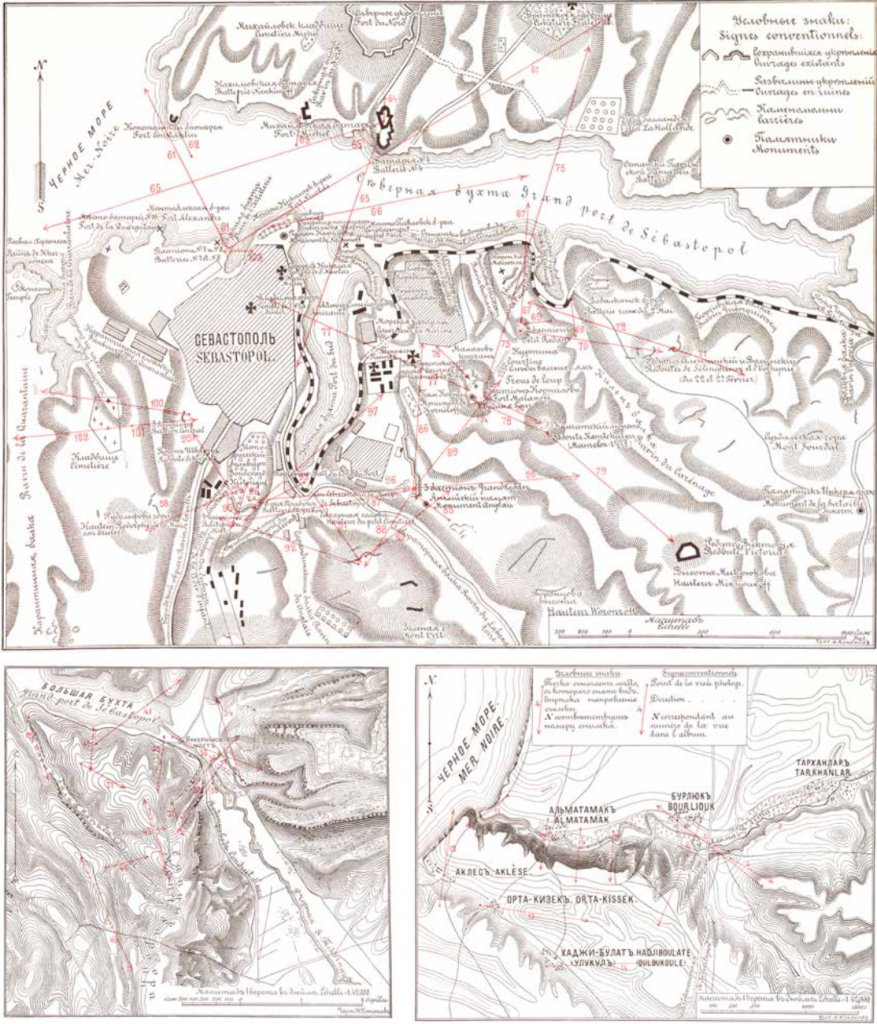
Colonel Klembovsky, Album “Battlefields of the Crimean campaign”.
Above: Sevastopol and its surroundings.
Bottom left: Inkerman Battlefield, October 24th, 1854
Bottom right: Alma Battlefield, September 8th, 1854
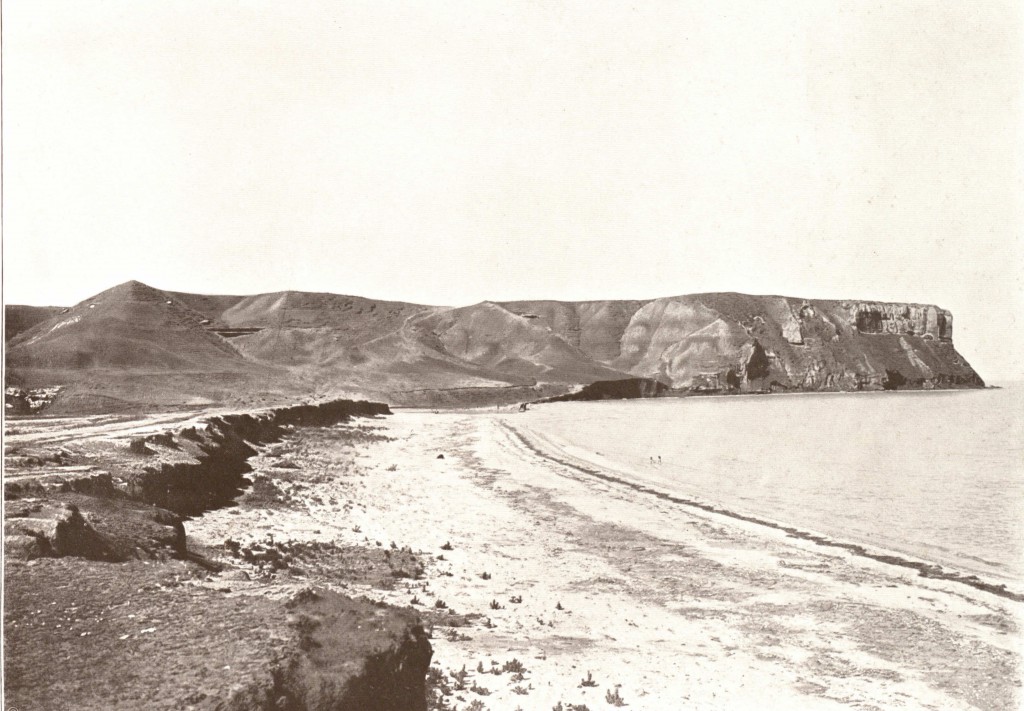
Ford near mouth of Alma River and path, used by Bouat brigade from Bosquet division. Photographs by Colonel Vladislav Klembovsky/Album BATTLEFIELDS OF THE CRIMEAN CAMPAIGN 1854-1855/courtesy of the State Historic Public Library of Russia
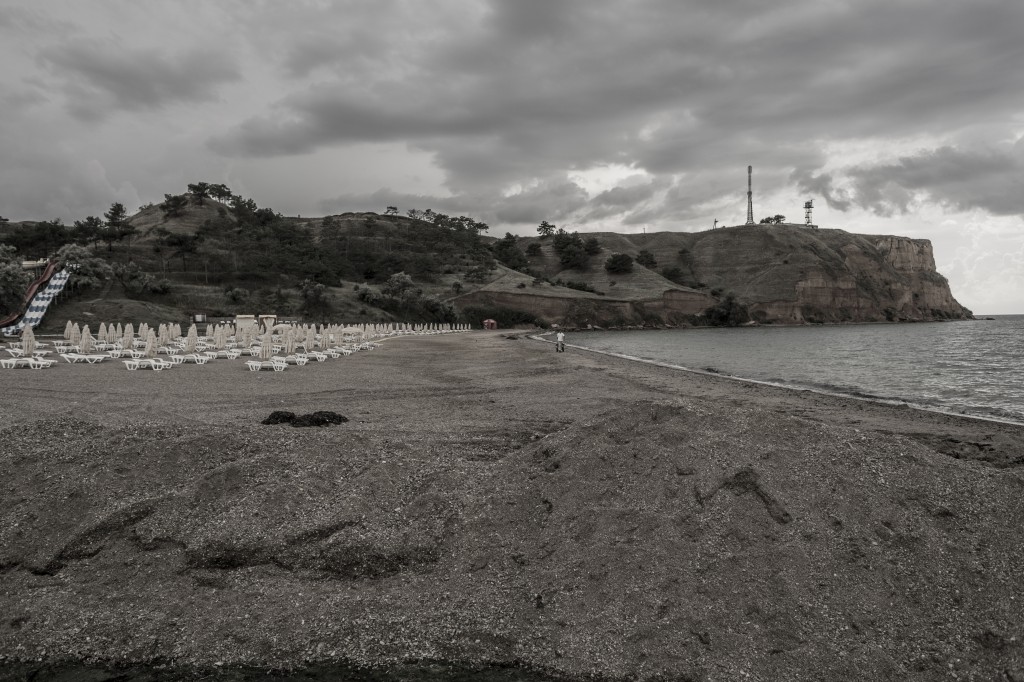
Modern view of the Crimea, June 2014
The valley of the shadow of death (digital file from b&w film copy neg) Roger Fenton Crimean War photograph collection, Prints & Photographs Division, Library of Congress, LC-DIG-ppmsca-35546
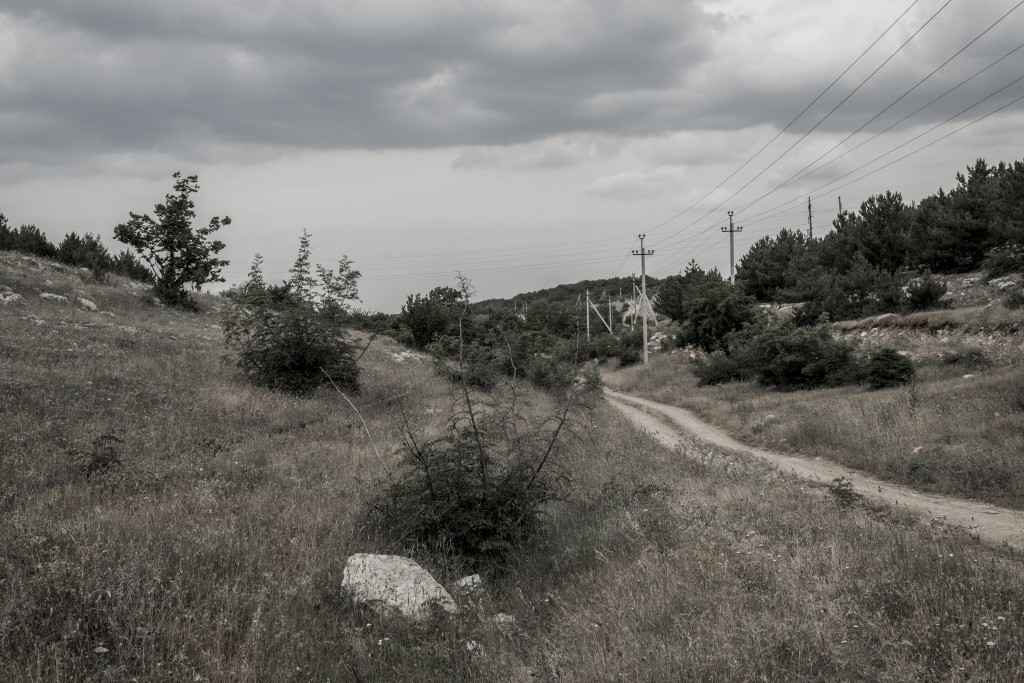
Modern view. South of Sevastopol
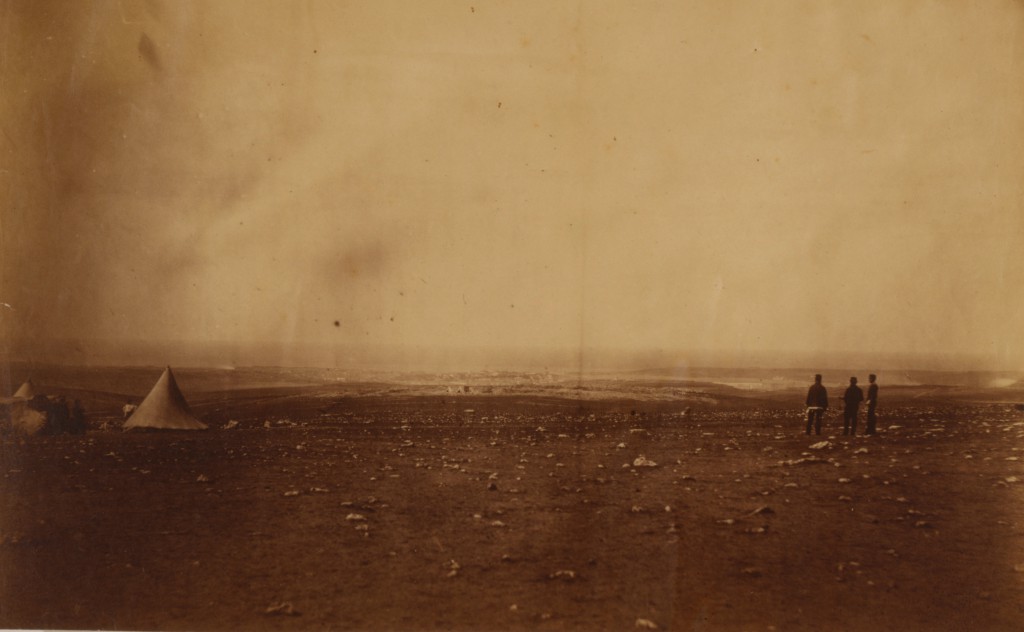
Sebastopol from the front of Cathcarts Hill (color film copy transparency) Roger Fenton Crimean War photograph collection, Prints & Photographs Division, Library of Congress, LC-USZC4-9260
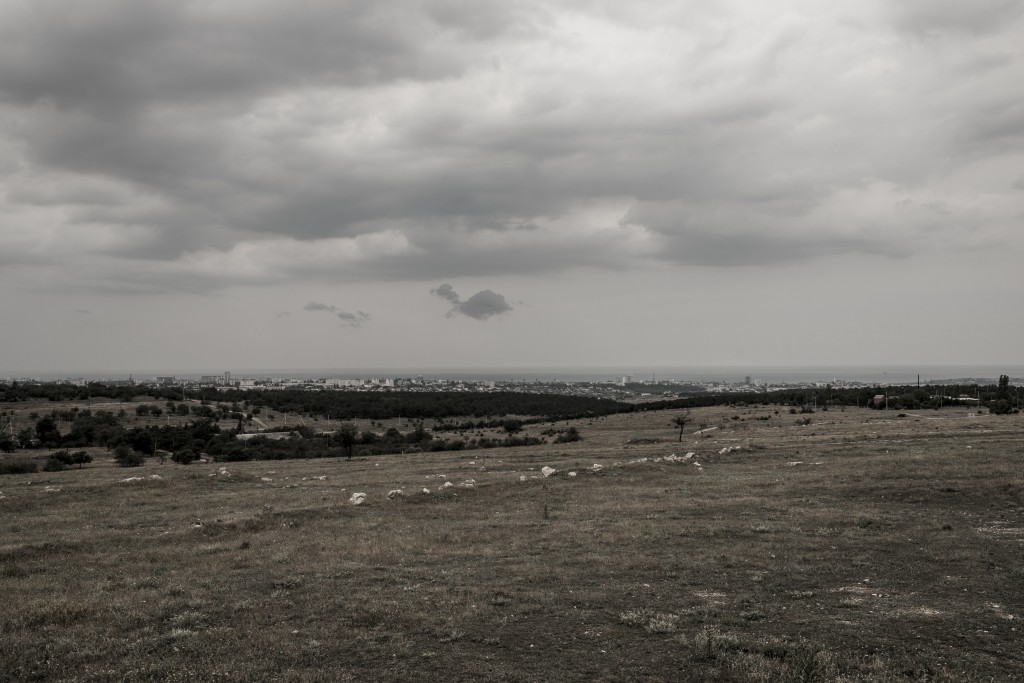
Distant view of Sevastopol from the front of Cathcart’s Hill. Inspired by a Roger Fenton’s photograph of the Crimean War. Crimea, 19 June 2014.
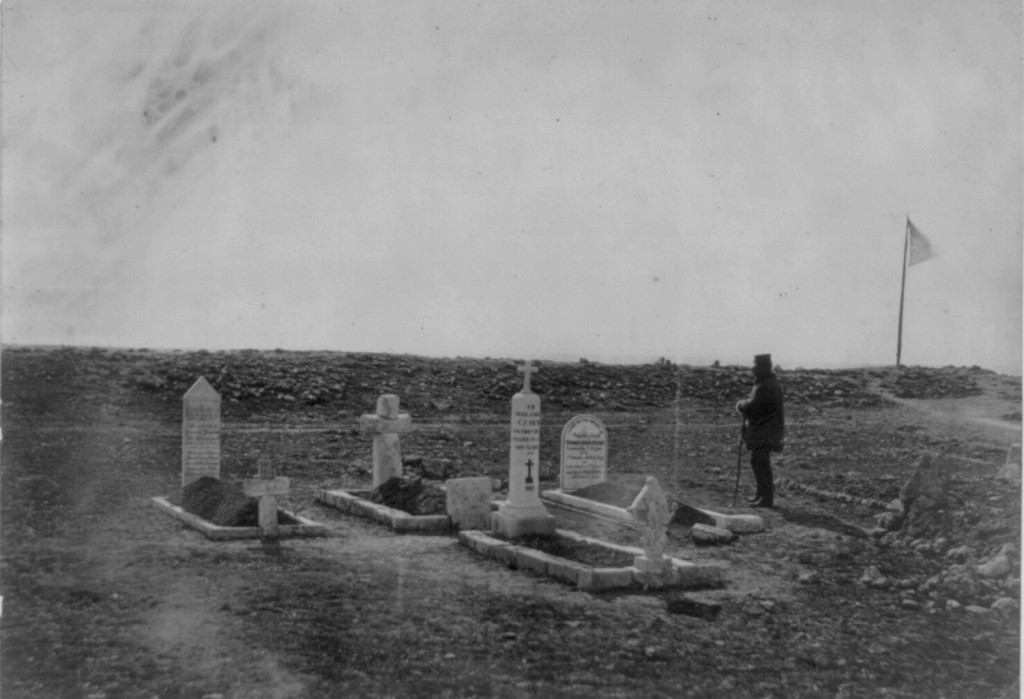
Roger Fenton. The tombs of the generals on Cathcarts field, Sevastopol.
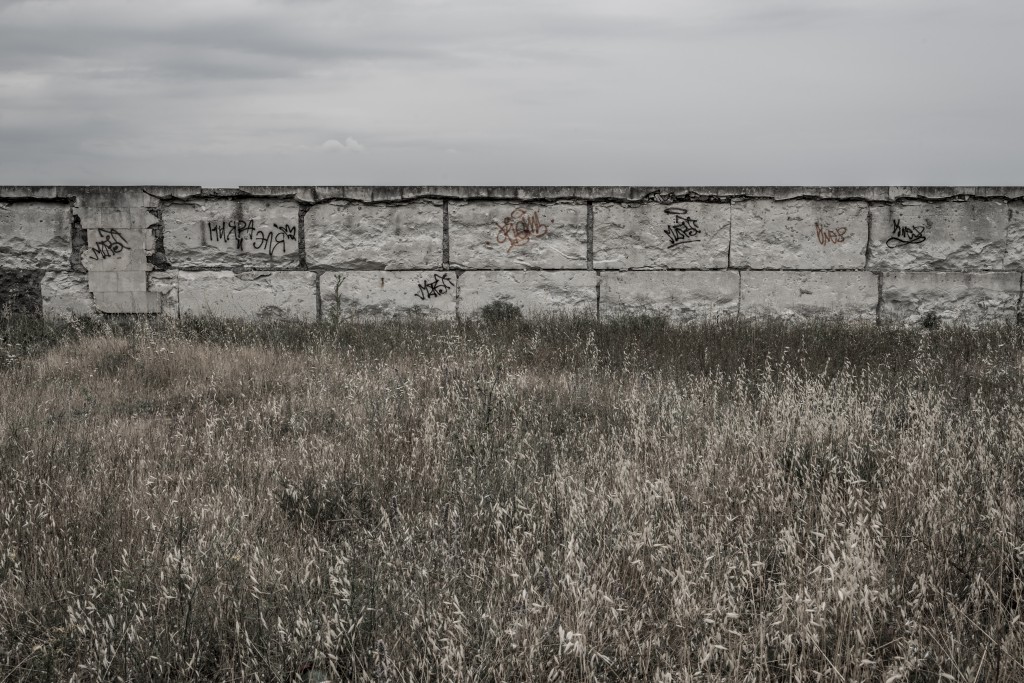
A wall on top of Cathcart’s hill, near Sevastopol, where once stood a large British War cemetery, extensively destroyed during World War II. On this spot, there were several tombs of generals killed during the Crimean War. Inspired by a Roger Fenton’s photograph of the Crimean War. Crimea, 19 June 2014.

Cossack Bay, Balaklava (b&w film copy neg.) Roger Fenton Crimean War photograph collection, Prints & Photographs Division, Library of Congress, LC-USZ62-2375
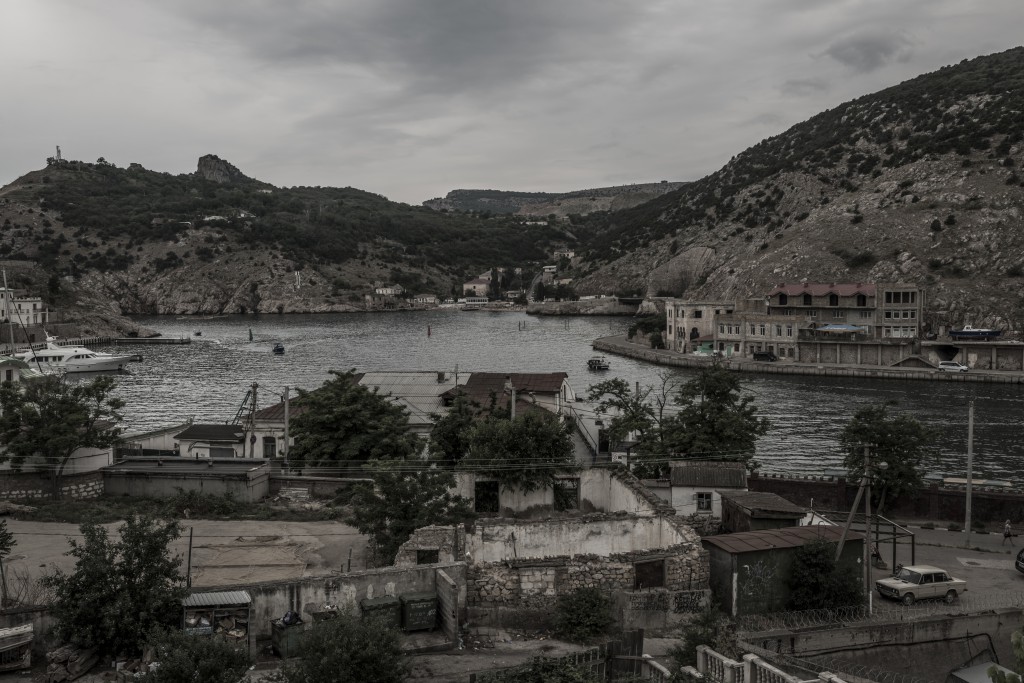
Cossack Bay, Balaklava. Inspired by a Roger Fenton’s photograph of the Crimean War. Balaklava, Crimea. 19 June 2014
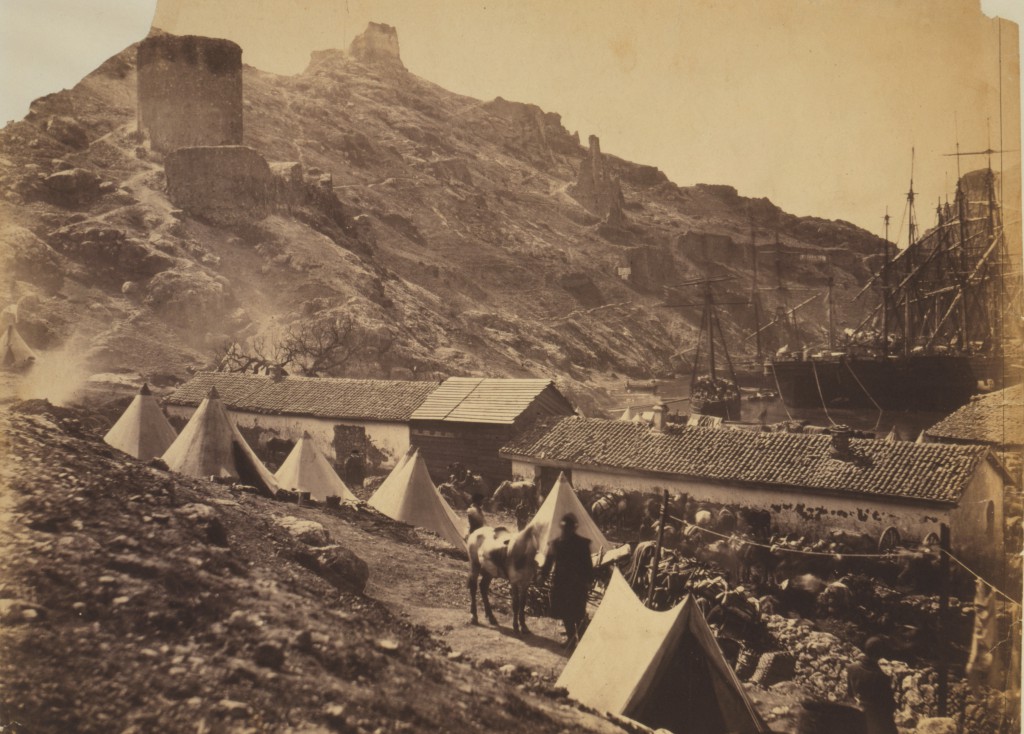
The old Genoese Castle at Balaklava from above the castle pier (color film copy transparency) Roger Fenton Crimean War photograph collection, Prints & Photographs Division, Library of Congress, LC-USZC4-9116
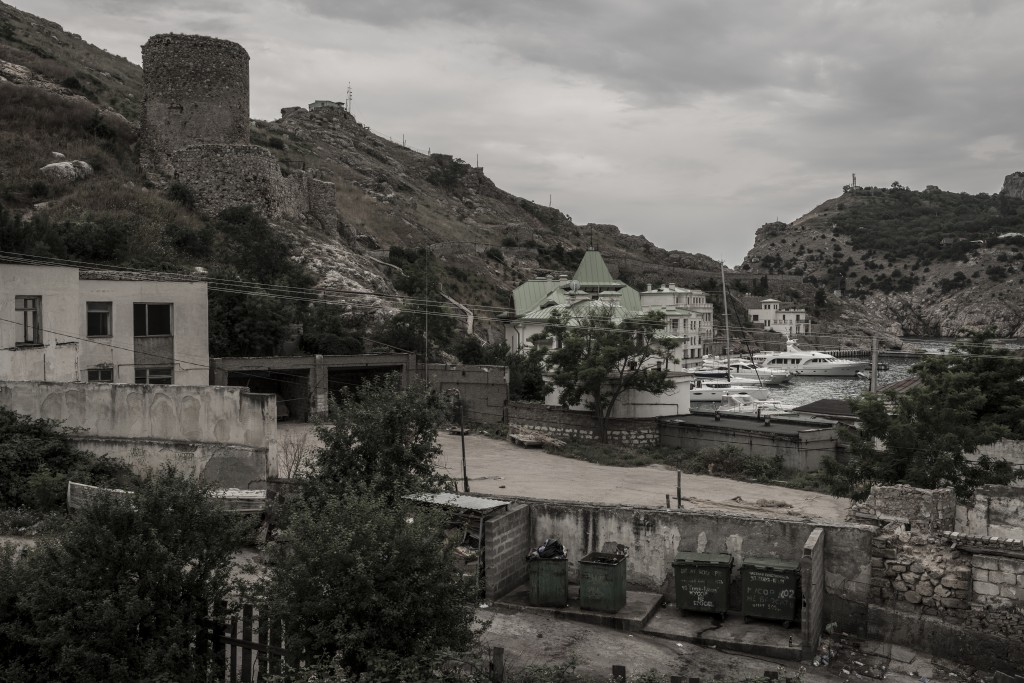
Inspired by a Roger Fenton’s photograph of the Crimean War. Crimea, June 2014
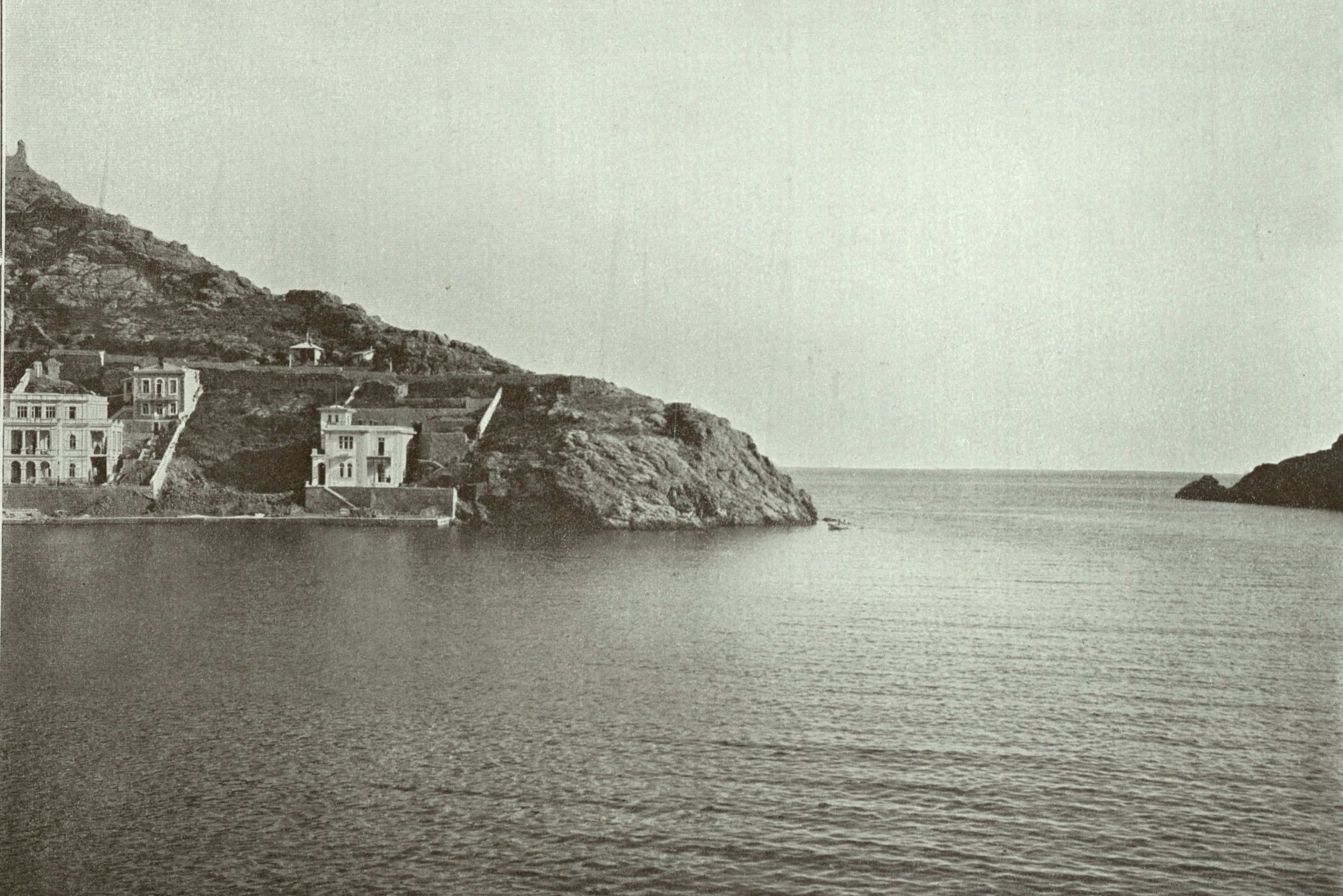
Entrance of Balaclava Bay. Photographs by Vladislav Klembovsky/Album BATTLEFIELDS OF THE CRIMEAN CAMPAIGN 1854-1855/courtesy of the State Historic Public Library of Russia
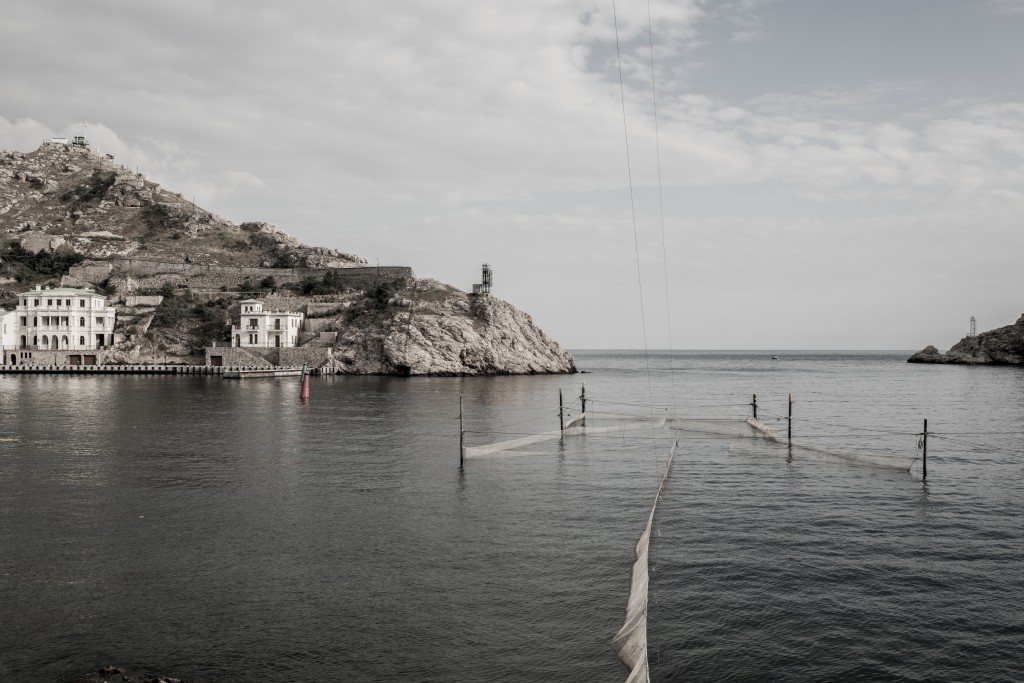
Entrance of Balaklava Bay. Inspired by a Colonel Vladislav Klembovsky’s photograph. Balaklava, Crimea. 19 June 2014.
Inkerman ruins. Photographs by Colonel Vladislav Klembovsky/Album BATTLEFIELDS OF THE CRIMEAN CAMPAIGN 1854-1855/courtesy of the State Historic Public Library of Russia
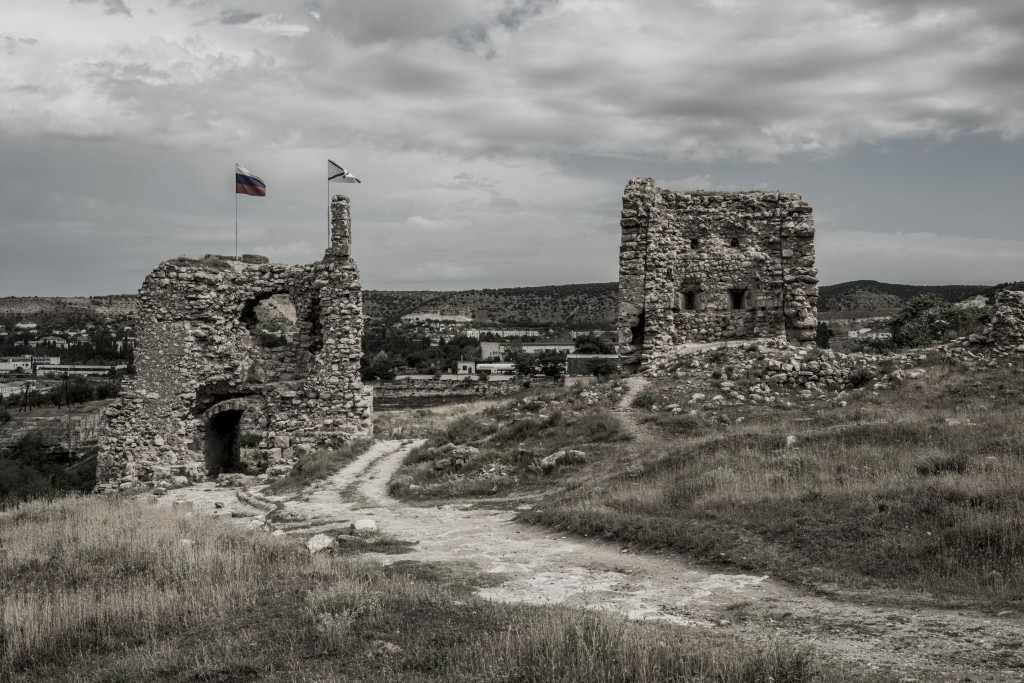
Inspired by a colonel V.Klembovsky’s photograph, Album “Battlefields of the Crimean Campaign” Crimea, June 2014.
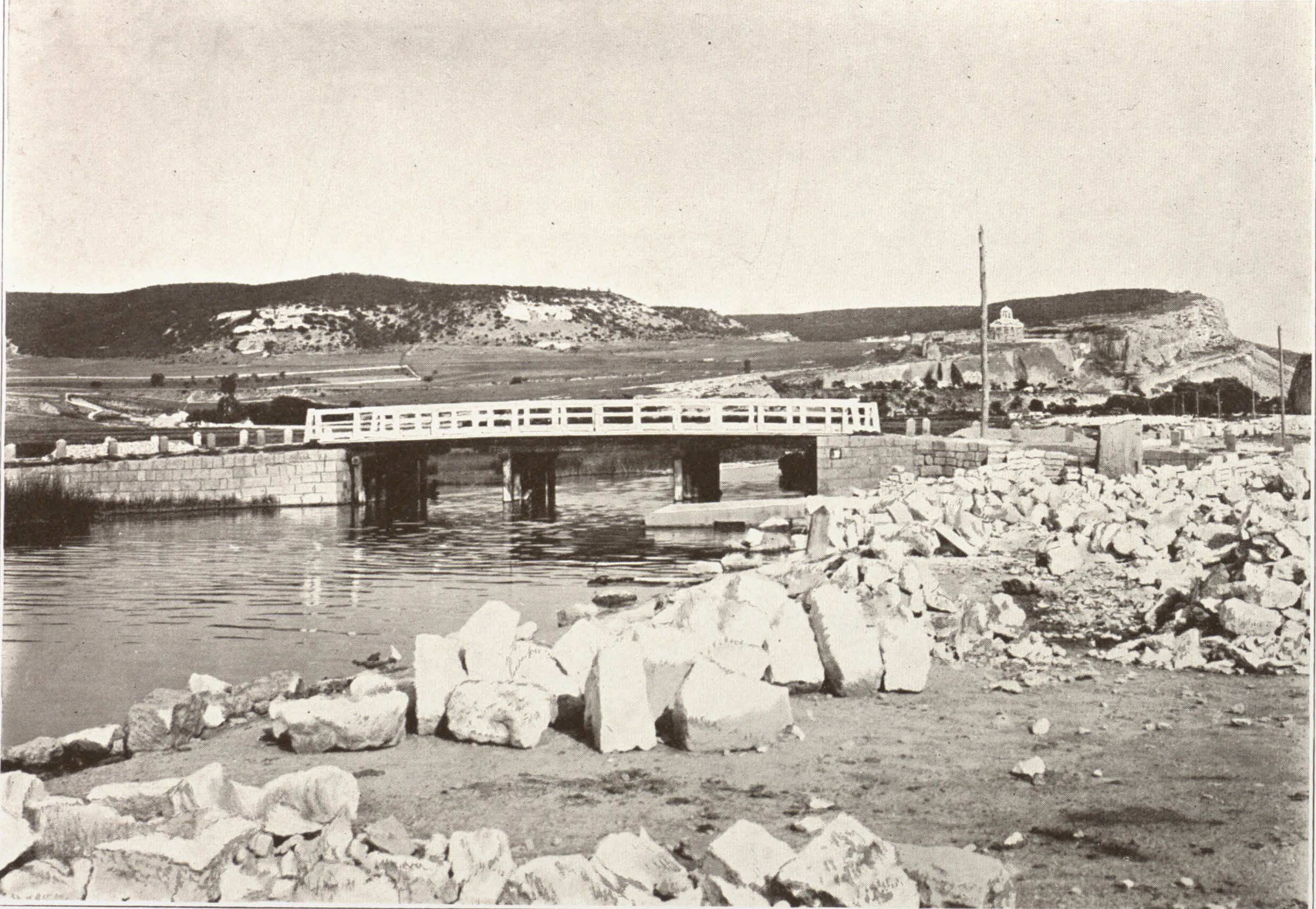
Bridge across Tchernaya River, used by General Pavlov’s column. In the background – Inkerman Hill. On the right side of the bridge – the construction site of the Church of St. Clement Photographs by Colonel Vladislav Klembovsky/Album BATTLEFIELDS OF THE CRIMEAN CAMPAIGN 1854-1855/courtesy of the State Historic Public Library of Russia
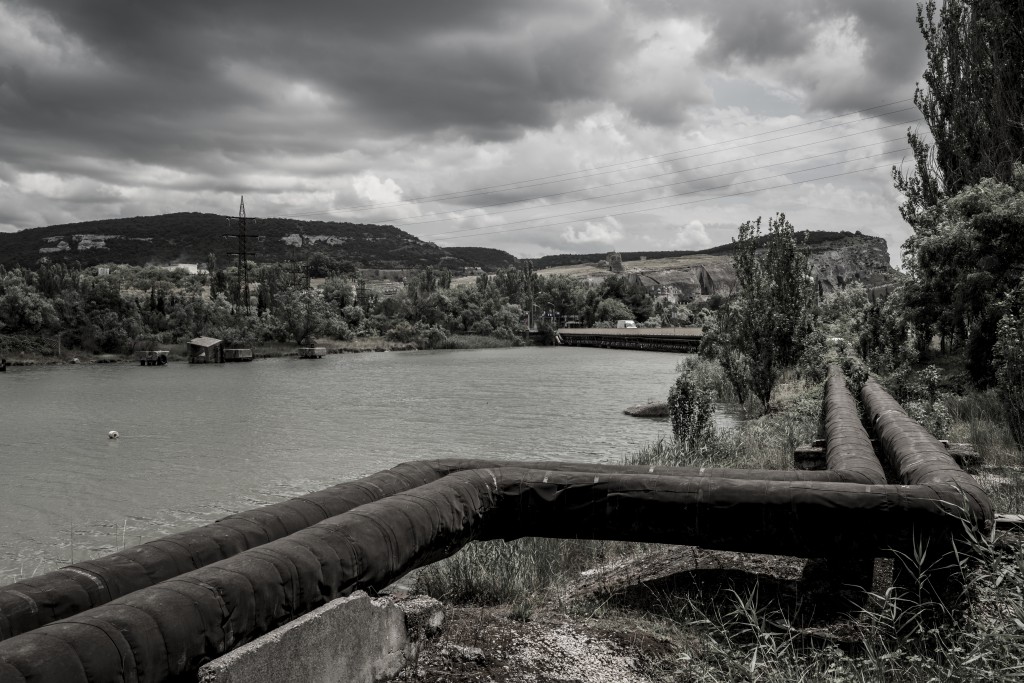
Inspired by a colonoel V.Klembovsky’s photograph, Album “Battlefields of the Crimean campaign”, Crimea, June 2014.
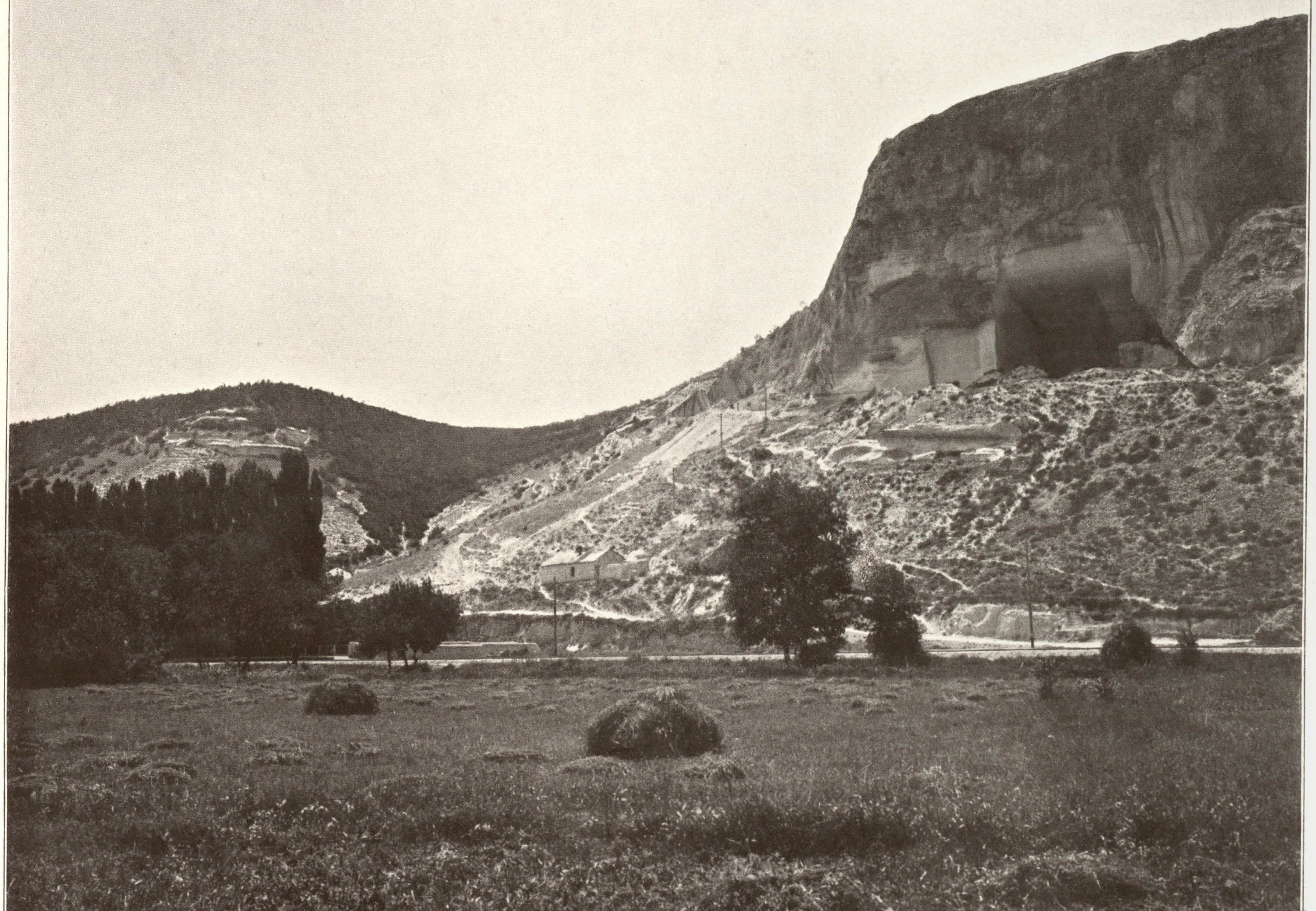
Slope of the Devil Ravine, where British battery # 1 was located (the top of the left slope). Photographs by Colonel Vladislav Klembovsky/Album BATTLEFIELDS OF THE CRIMEAN CAMPAIGN 1854-1855/courtesy of the State Historic Public Library of Russia

Slope of the Devil Ravine (Tchortov) where the 1st British battery was located during the Battle of Inkerman. Inspired by a Colonel Vladislav Klembovsky’s photograph. Near Inkerman, Crimea. 20 June 2014.
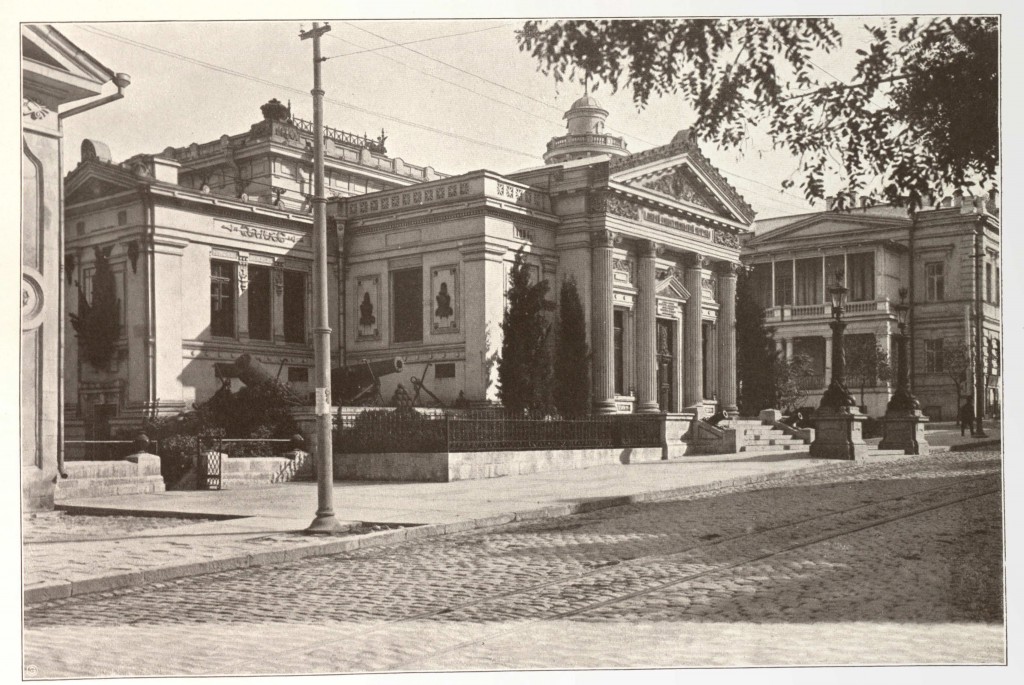
Museum of Sevastopol Defense. The Tower of the old Admiralty (which survived the Sieage of Sevastopol) is seen over the fronton of the Museum. Photographs by Colonel Vladislav Klembovsky/Album BATTLEFIELDS OF THE CRIMEAN CAMPAIGN 1854-1855/courtesy of the State Historic Public Library of Russia
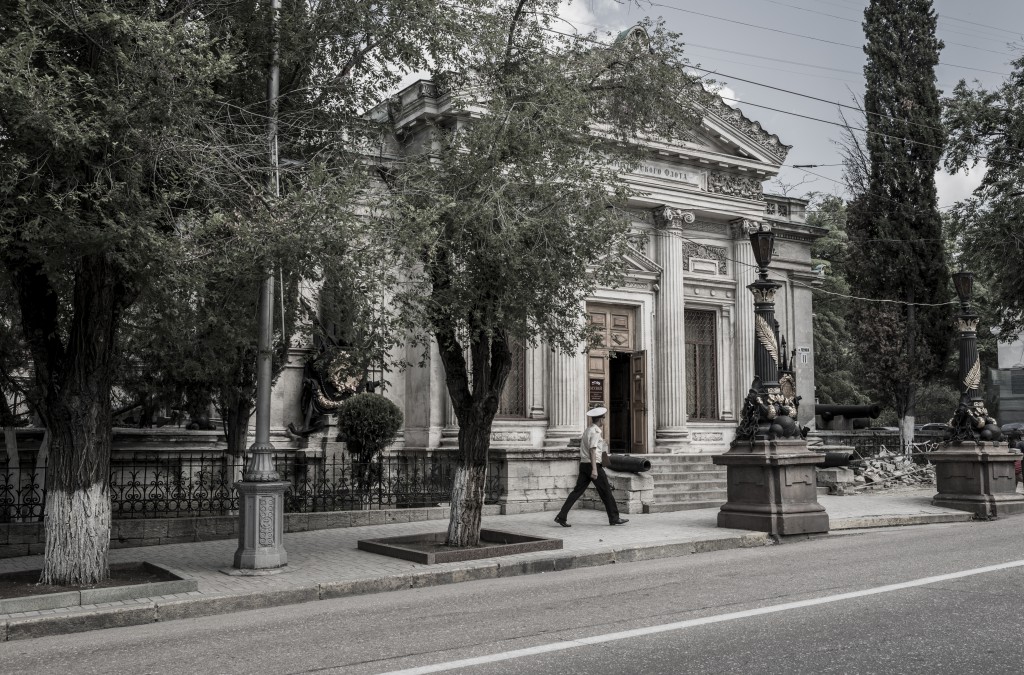
Inspired by a colonel Klembovsky’s photograph, Album “Battlefields of the Crimean campaign”, Criema, June 2014.
Advance path of the Russian 7th Infantry Division. In the background – center – watch barracks can be seen at the foot of The Fedioukhine hills. On the left, near the two trees is a ford which the 7th Division crossed (the Chernaya river is unseen). Also in the background, on the left – Sapun Hill Photographs by Colonel Vladislav Klembovsky/Album BATTLEFIELDS OF THE CRIMEAN CAMPAIGN 1854-1855/courtesy of the State Historic Public Library of Russia
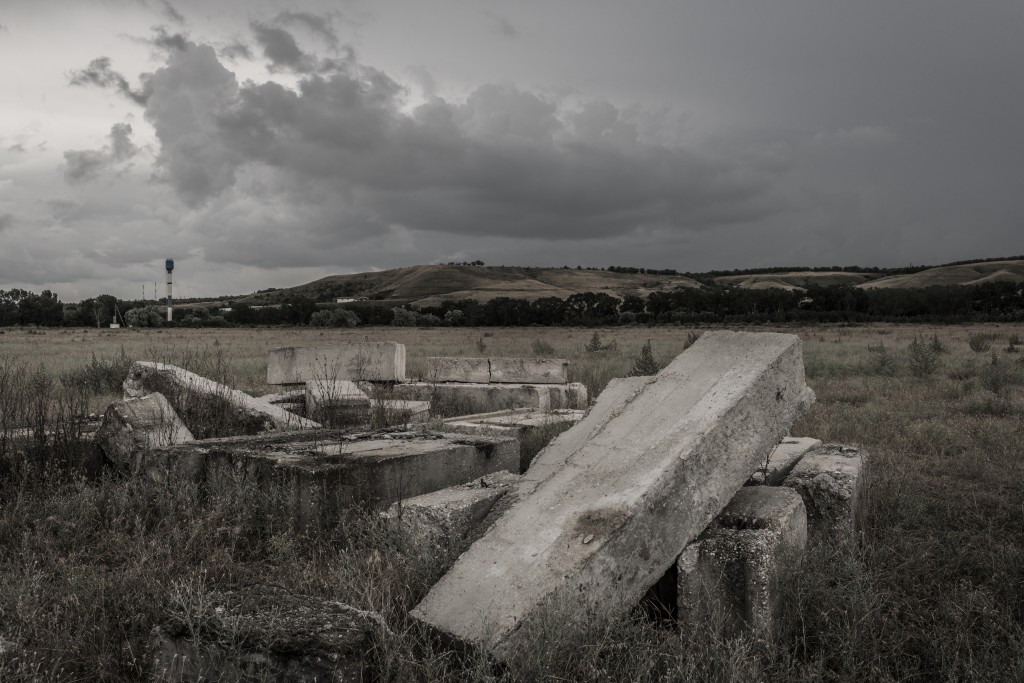
Inspired by a colonel V.Klembovsky photograph, Album “Batllefields of the Crimean capmaign”, Crimea, June 2014.
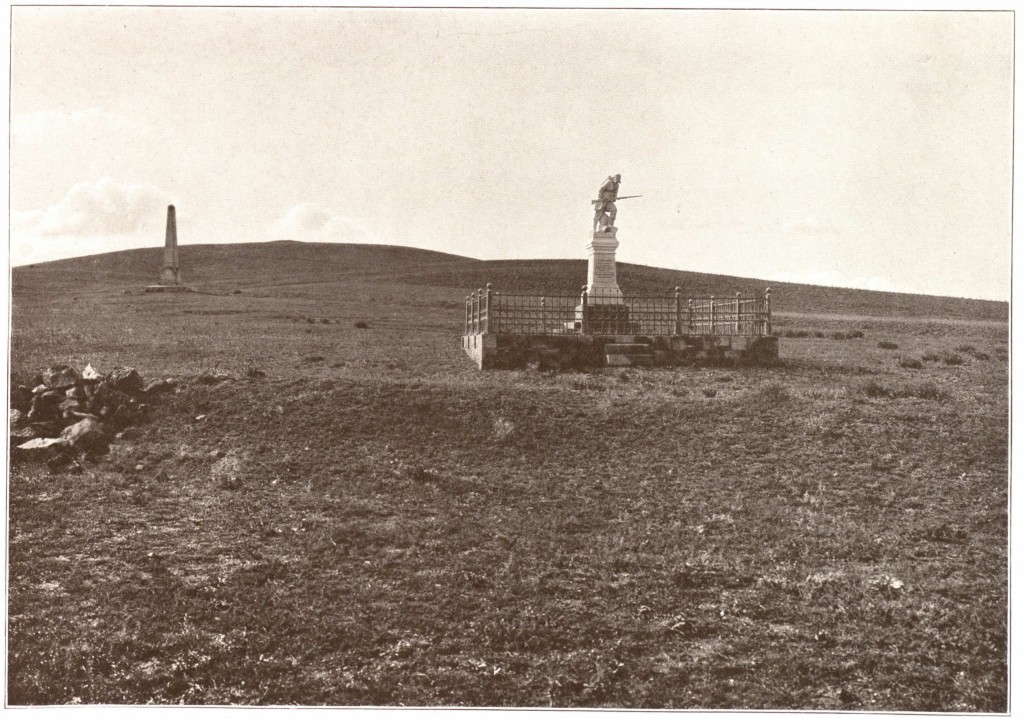
Position of the Grand Duke Michael Jager Regiment and battery of the 16th artillery brigade (marked by the stone pile and remains of the earthworks on the foreground) attacked (from left to right from the viewer) by Brown, Evance and Duke of Cambridge divisions. Monument on the foreground was erected in honor of the Vladimir Regiment soldiers, up on the slope and to the left is the monument to all Russian soldiers, died in battle. Duke Menshikov was stationed during the Alma battle on top of this height on the background. Photographs by Colonel Vladislav Klembovsky/Album BATTLEFIELDS OF THE CRIMEAN CAMPAIGN 1854-1855/courtesy of the State Historic Public Library of Russia
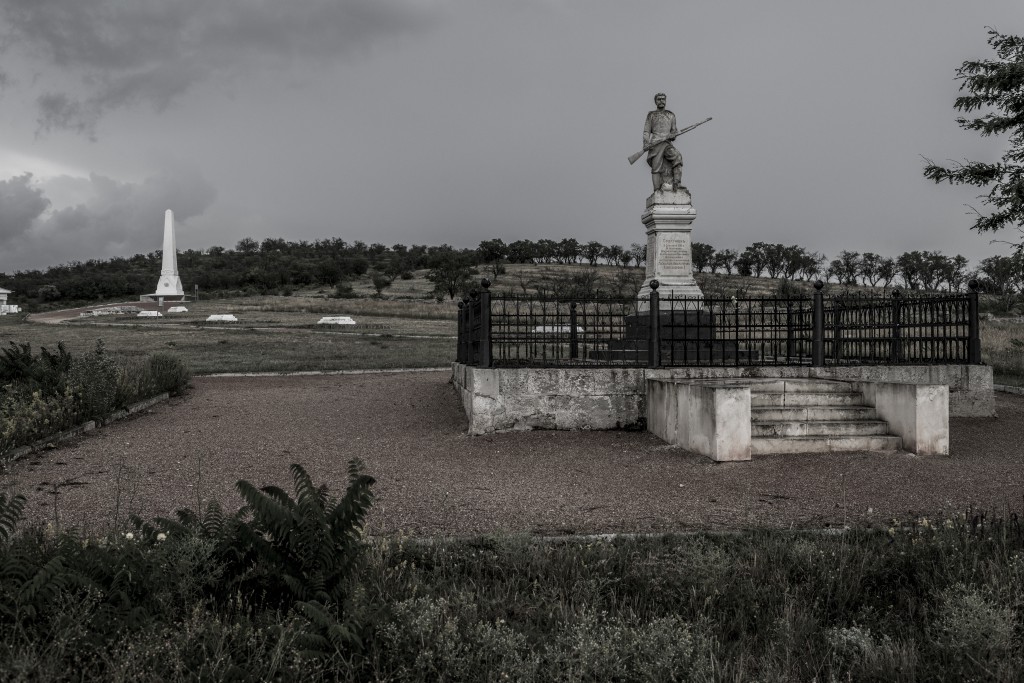
Inspired by a colonel V.Klembovsky’s photograph, Album “Battlefields of the Crimean campaign”. Crimea, June 2014. 
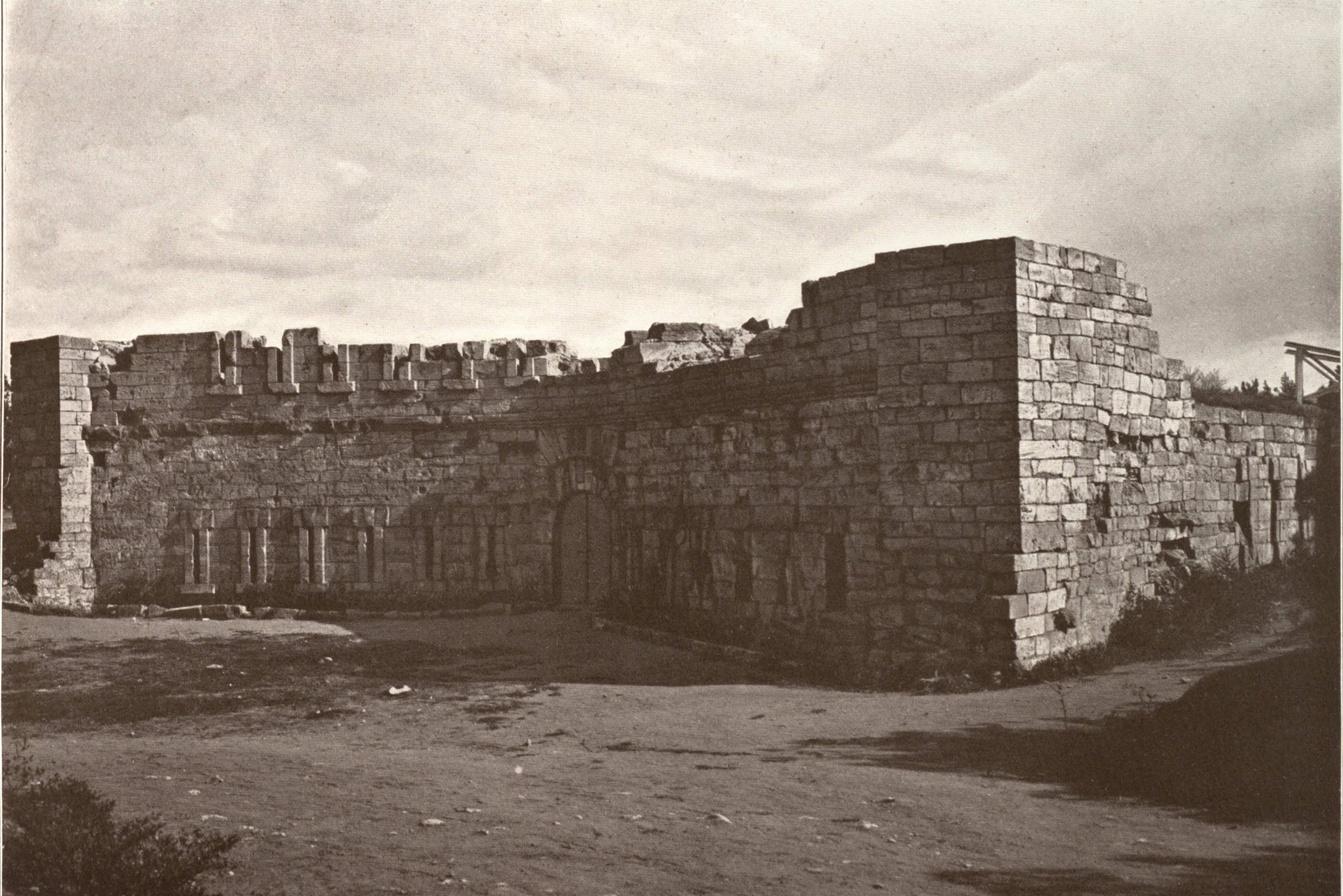
Malakhov Tower. The upper part of the Tower was destroyed during the bombardment on October the 5th 1854. Photographs by Colonel Vladislav Klembovsky/Album BATTLEFIELDS OF THE CRIMEAN CAMPAIGN 1854-1855/courtesy of the State Historic Public Library of Russia
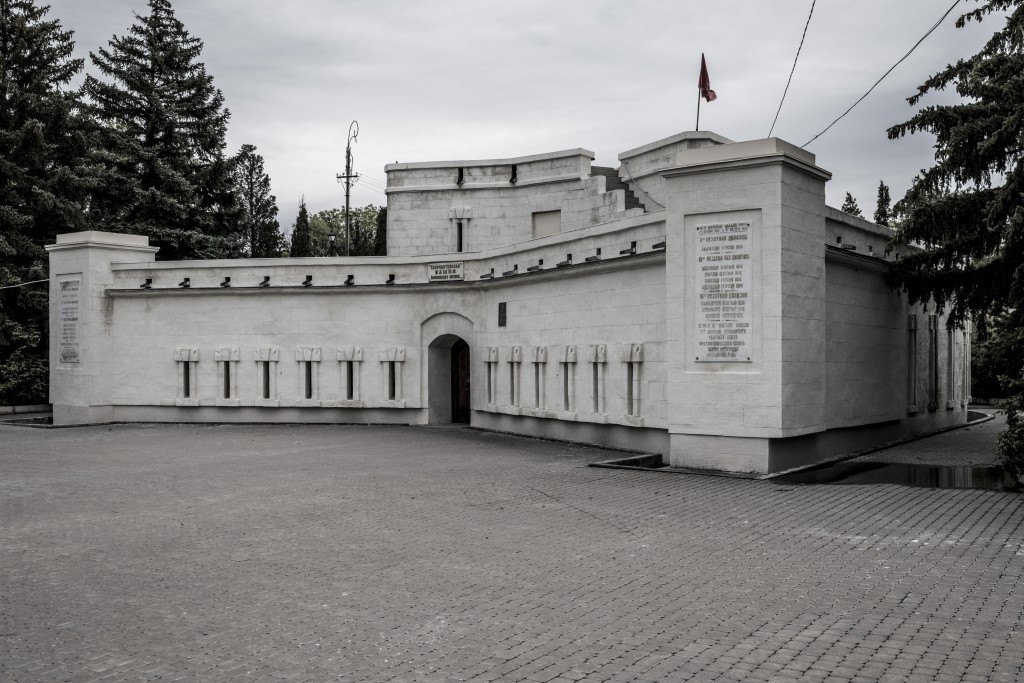
Inspired by colonel V.Klembovsky, Album “Battlefields of the Crimean campaign”. On the site where the Malakhov tower stood at the time of the Siege of Sevastopol (1854-55). Sevastopol, Crimea, June 2014.
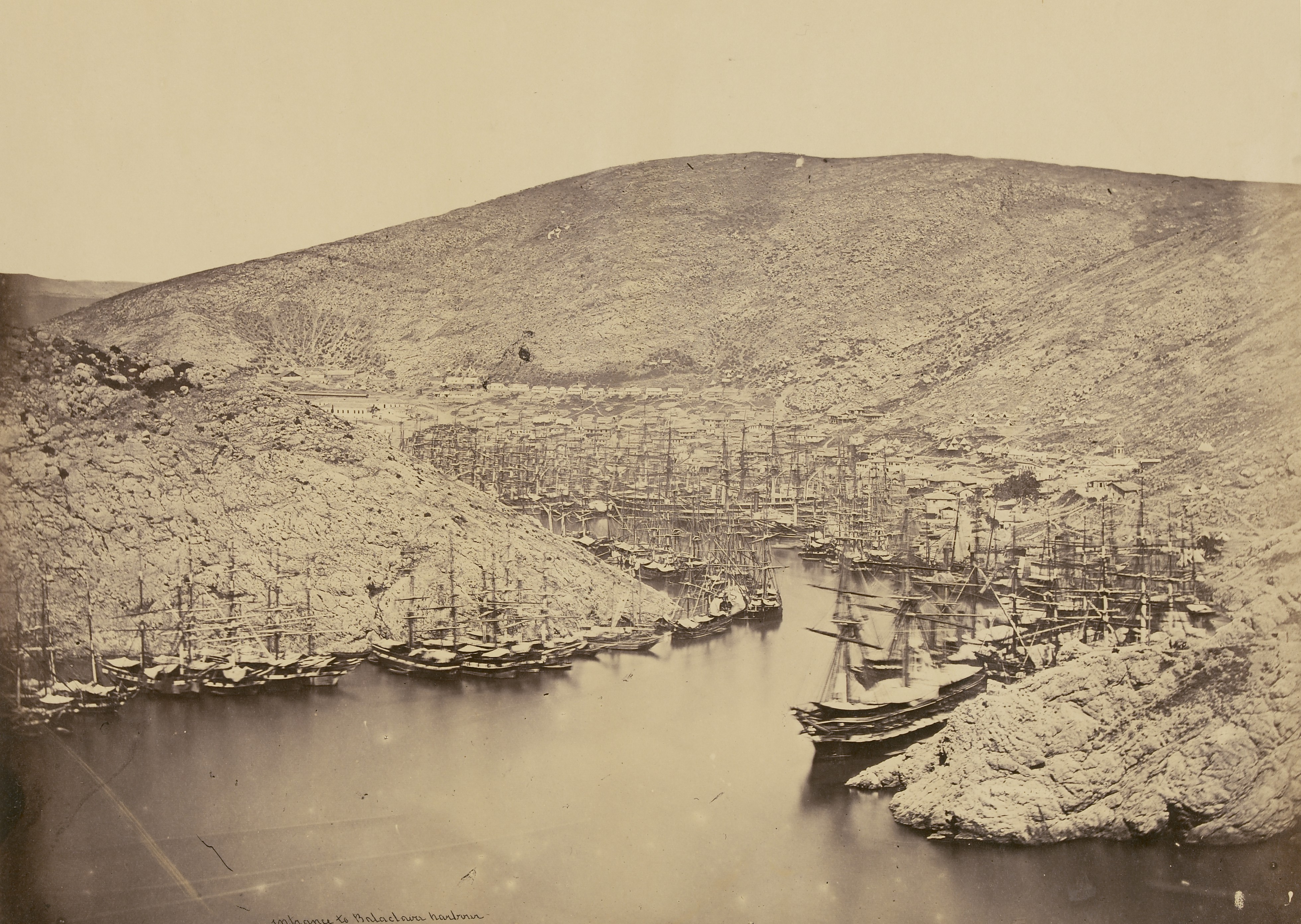
Entrance to Balaclava Harbour; James Robertson (English, 1813 – 1888); Crimea; 1855; Albumen silver print; 23.5 x 30.1 cm (9 1/4 x 11 7/8 in.); 84.XA.886.5.9
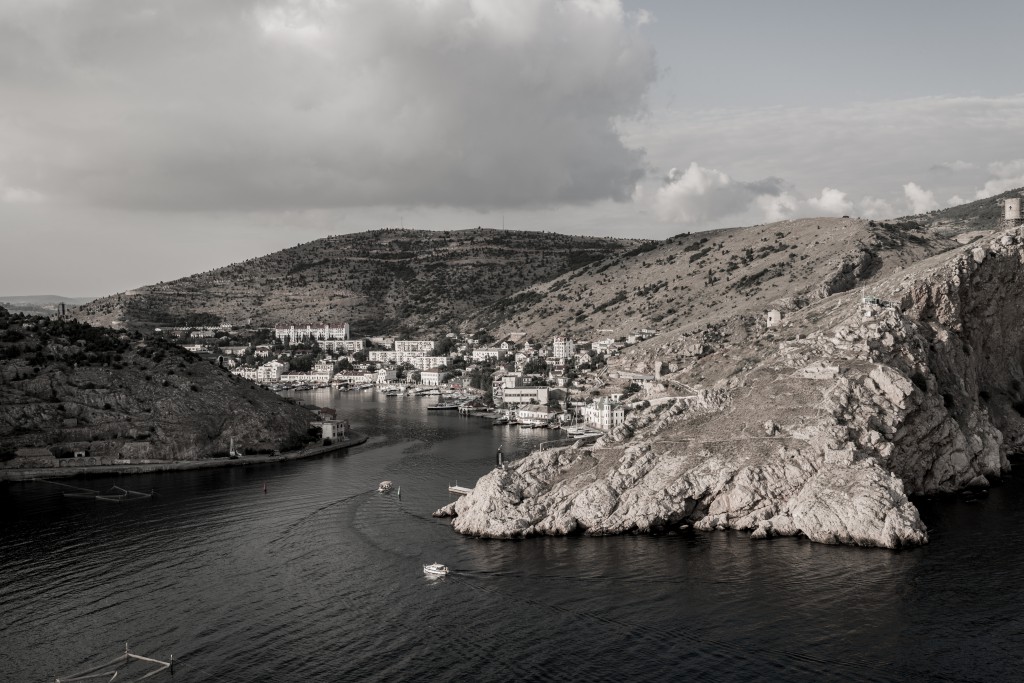
Inspired by a colonel V.Klembovsky photograph, Album “Battlefields of the Crimean campaign”. Crimea, June 2014.
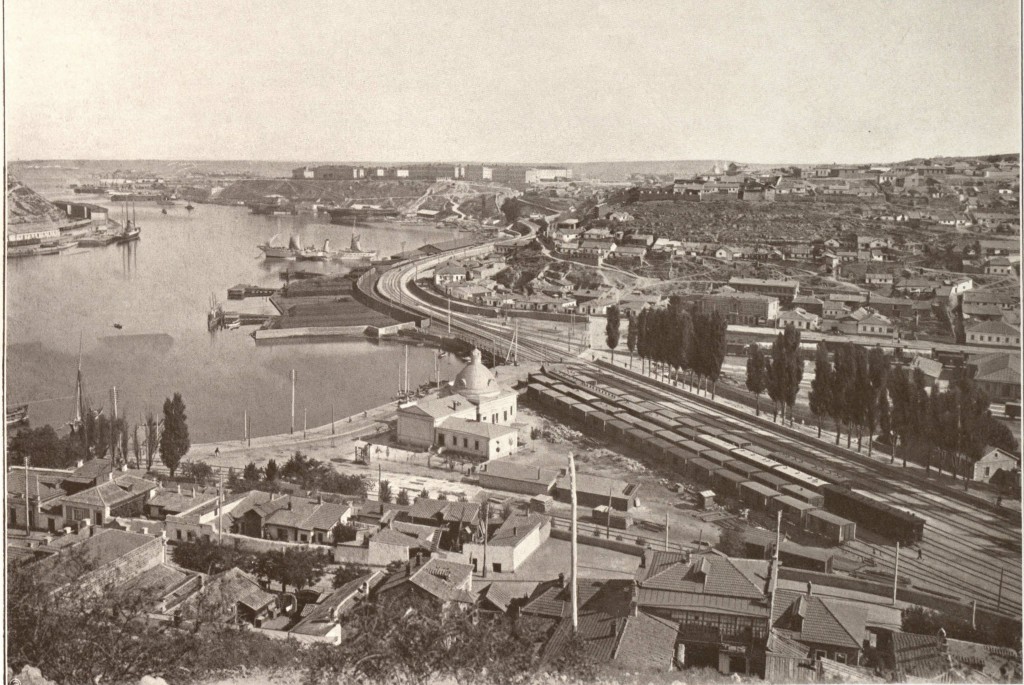
View of Peresyp (Stal Battery was on the site where the Church is seen now), South Bay, and Bomborsky Sloboda from Gribok Battery. On Bomborsky Sloboda’ left there are the barracks of the Brest Regiment; more left, by the end of the bay, right coast (white buildings), is the site where the Pavlov Battery was located. Photographs by Colonel Vladislav Klembovsky/Album BATTLEFIELDS OF THE CRIMEAN CAMPAIGN 1854-1855/courtesy of the State Historic Public Library of Russia
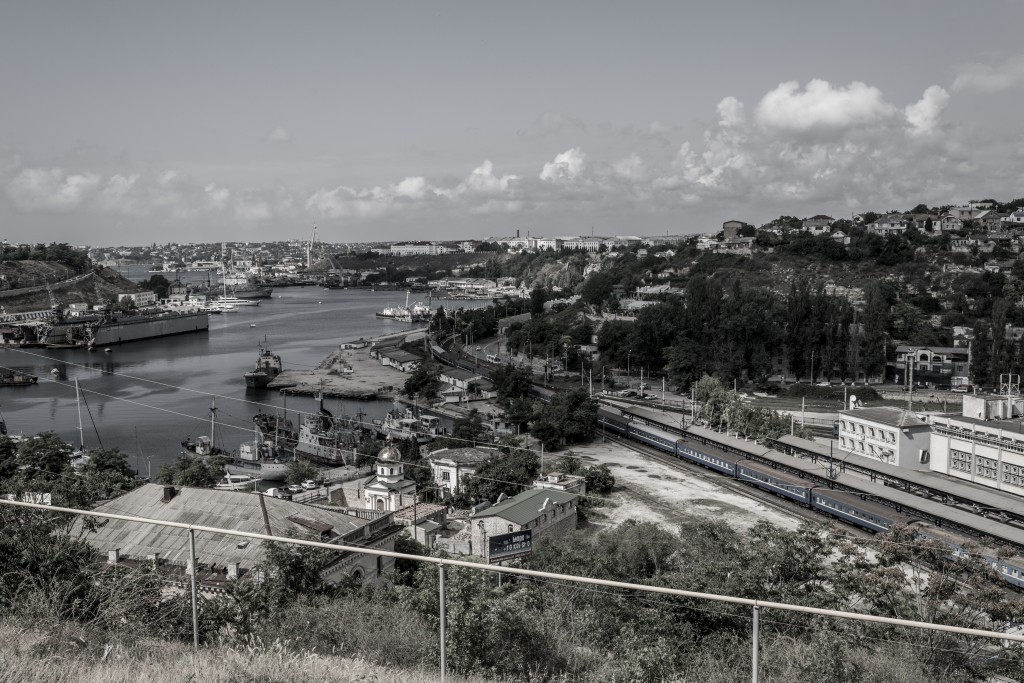
View of Peresyp, the South Bay and the Bomborsky Sloboda suburb taken from the site where the Gribok battery was positioned at the time of the Siege of Sevastopol (1854-55). Inspired by a Colonel Vladislav Klembovsky’s photograph. Sevastopol, Crimea. 23 June 2014.
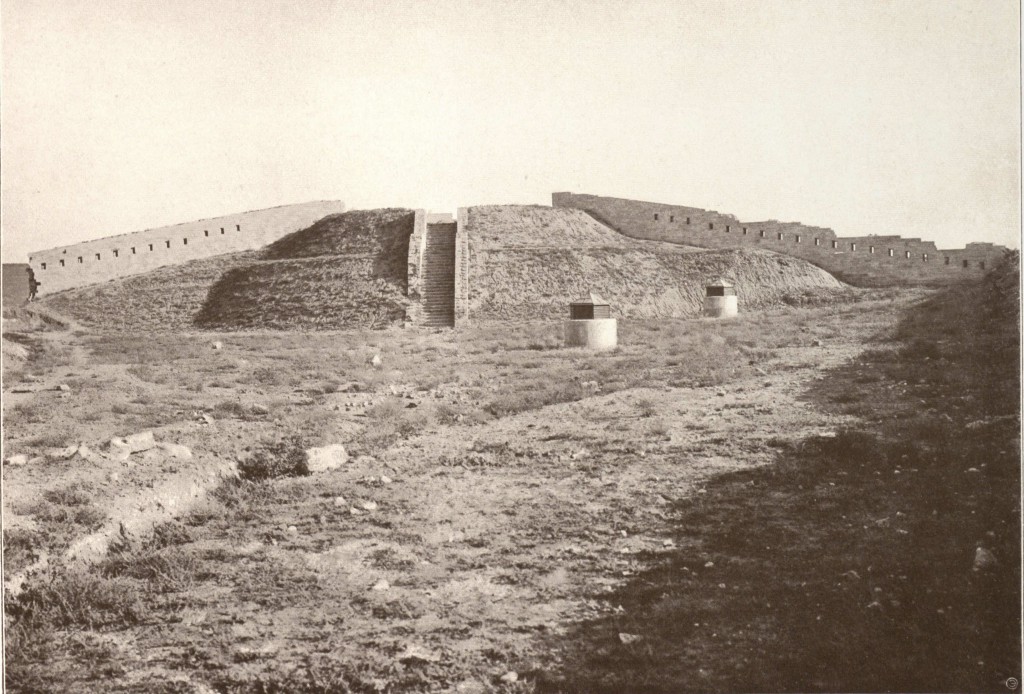
North part of the battery # 4 (Catherine) Photographs by Colonel Vladislav Klembovsky/Album BATTLEFIELDS OF THE CRIMEAN CAMPAIGN 1854-1855/courtesy of the State Historic Public Library of Russia
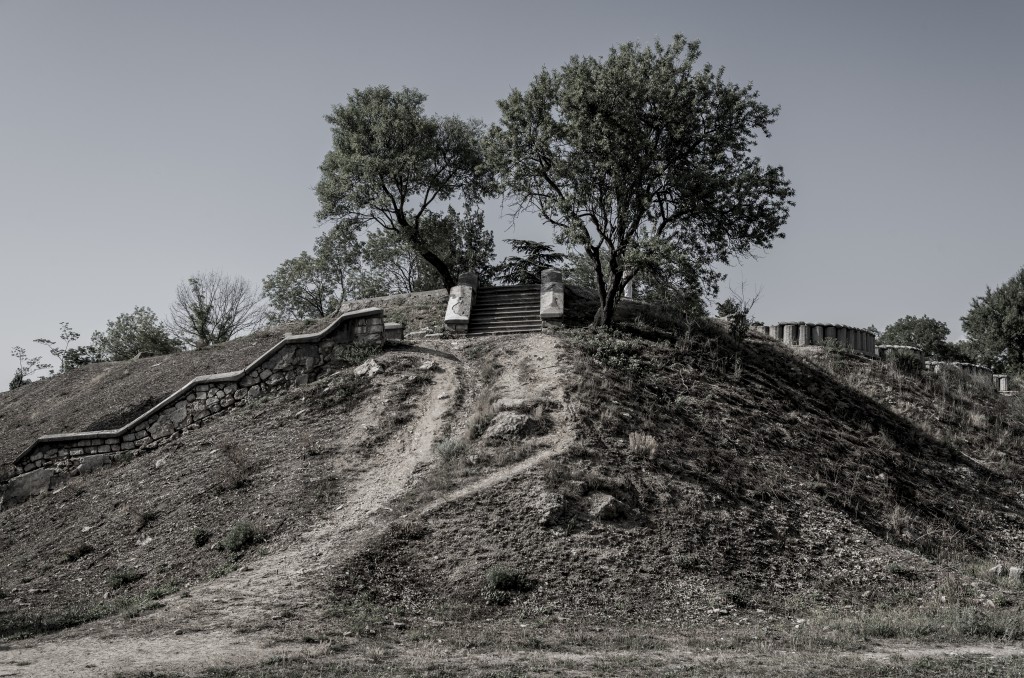
The remains of the North part of the 4th Russian battery (Catherine) defending Sevastopol during the Siege (1854-55). Inspired by a Colonel Vladislav Klembovsky’s photograph. Sevastopol, Crimea. 23 June 2014.
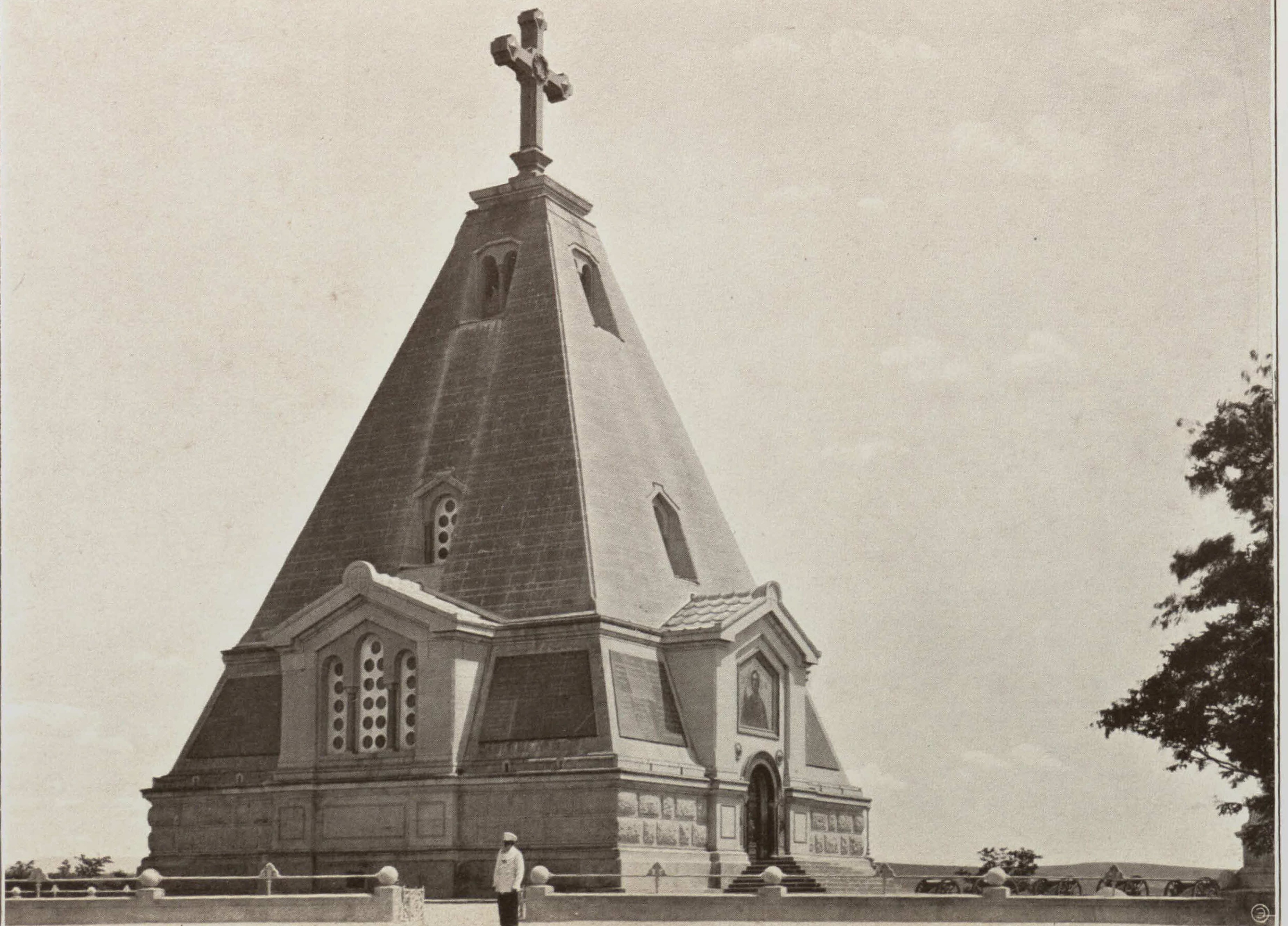
Bratsky Cemetery church. Photographs by Colonel Vladislav Klembovsky/Album BATTLEFIELDS OF THE CRIMEAN CAMPAIGN 1854-1855/courtesy of the State Historic Public Library of Russia
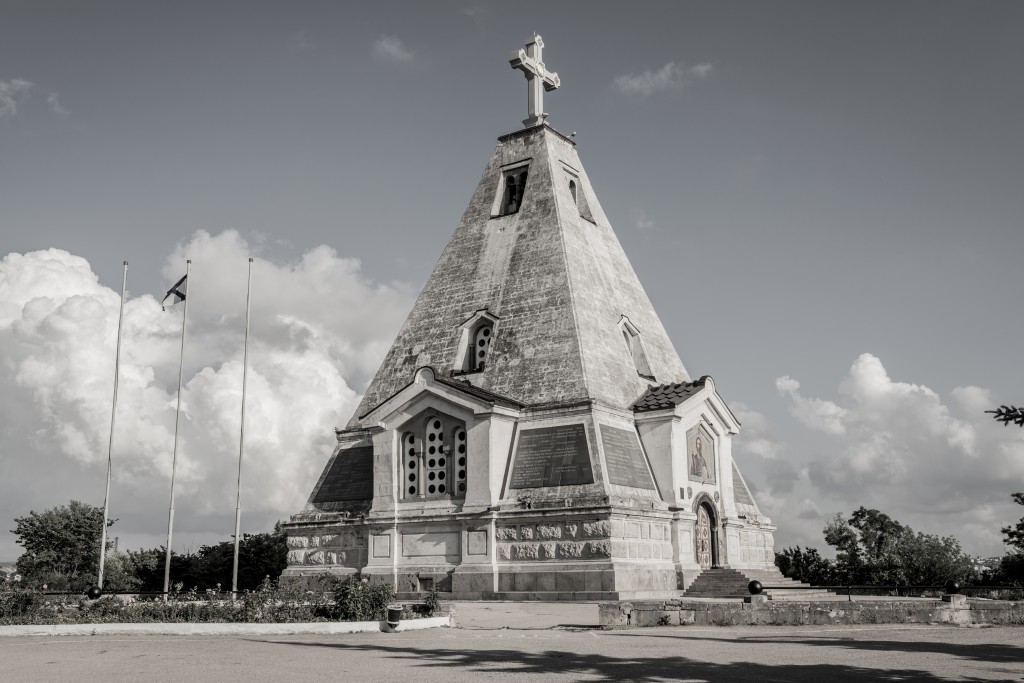
The Pyramidal church of St. Nicolas in the Fraternal Cemetery of Sevastopol, an enormous necropolis where thousands of soldiers (mostly unknown) fallen during the Siege of Sevastopol (1854-56) were buried. Inspired by a colonel V.Klembovsky’s photograph. Sevastopol, Crimea, 23 June 2014.
Balaclava battle monument, erected by the British. Photographs by Colonel Vladislav Klembovsky/Album BATTLEFIELDS OF THE CRIMEAN CAMPAIGN 1854-1855/courtesy of the State Historic Public Library of Russia
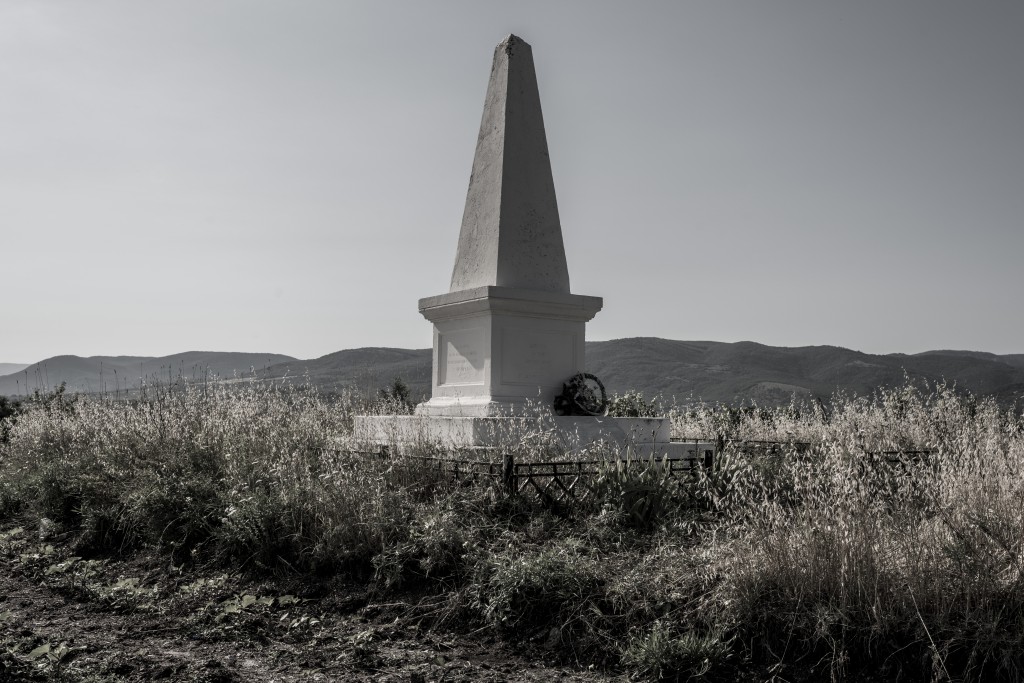
The Inkerman monument, erected by the British in memory of the soldiers fallen during the Battle of Inkerman (1854). Inspired by a colonel V.Klembovsky’s photograph. Inkerman, Crimea. 24 June 2014.
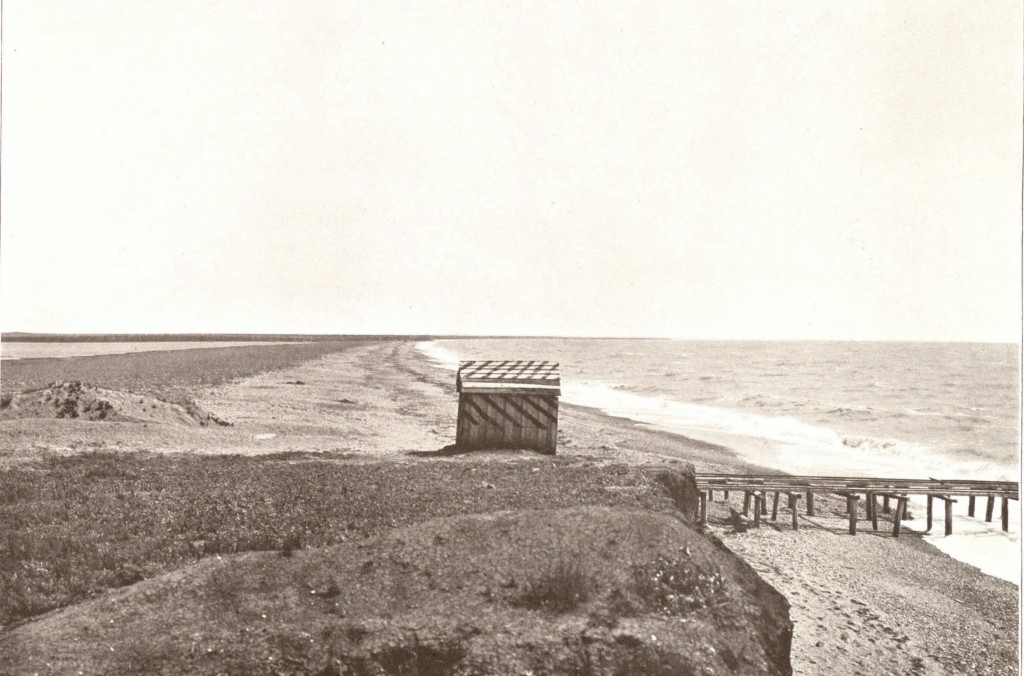
Landing place of the French Army, September 2, 1854. View from the North. Salt lake Kitchik-Bel on the left, Black Sea is on the right. Shack and wooden landing didn’t exist in 1854. Photographs by Vladislav Klembovsky/Album BATTLEFIELDS OF THE CRIMEAN CAMPAIGN 1854-1855/courtesy of the State Historic Public Library of Russia
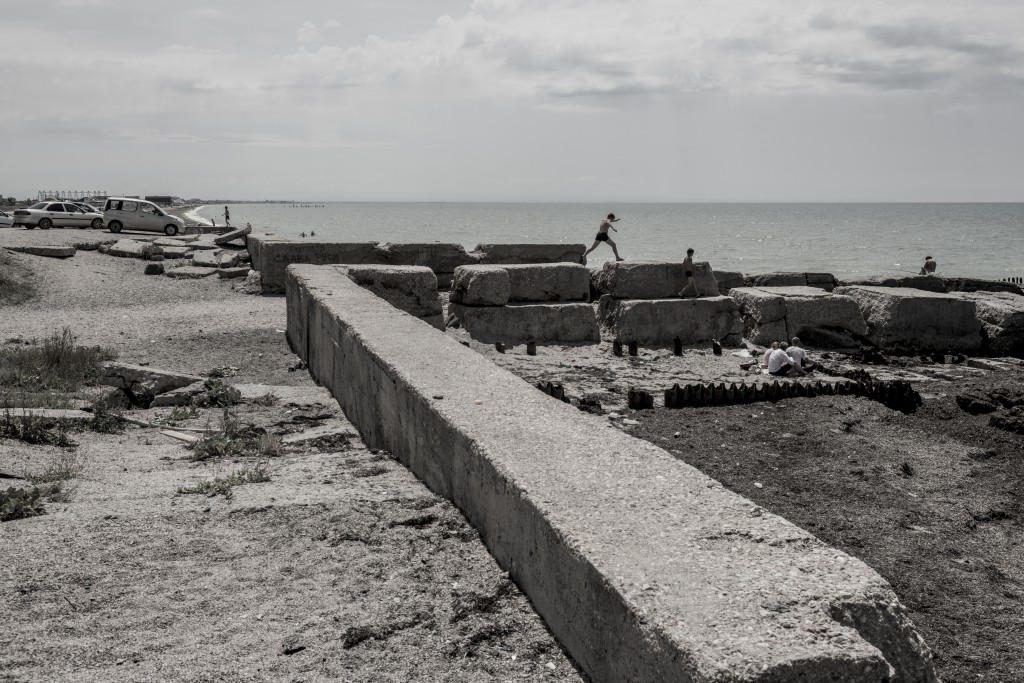
Landing place of the French army on 2 September 1854. The Black Sea lies on the right. Inspired by a Colonel Vladislav Klembovsky’s photograph. Calamita Bay (35 km North of Sevastopol), Crimea. 24 June 2014.
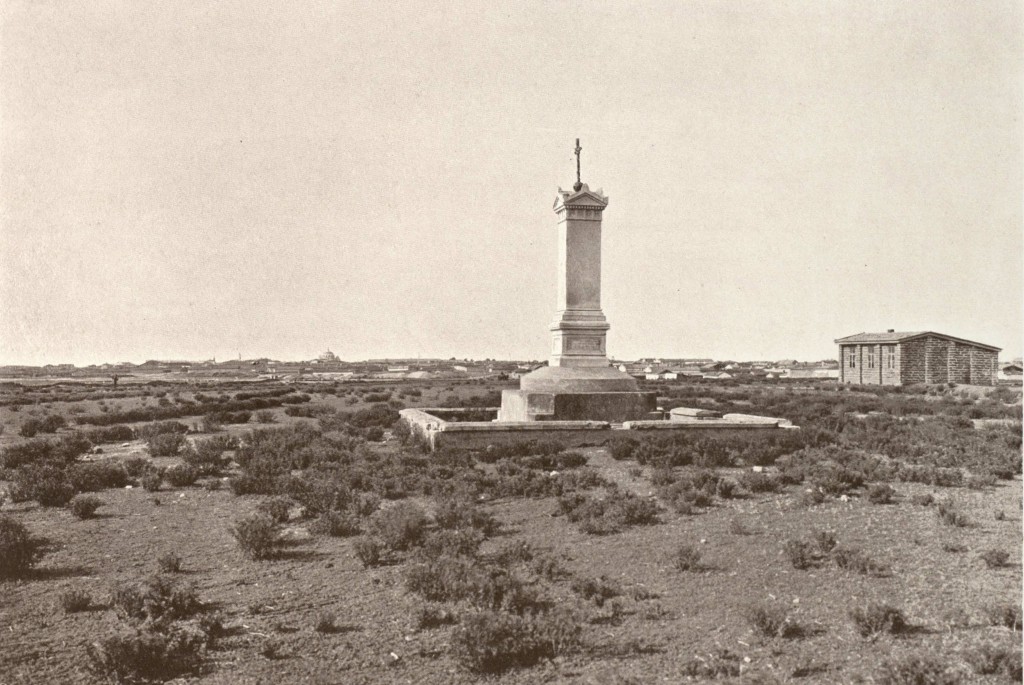
Left flank of the Russian Artillery deployment position. The battle monument to the Russians, perished near Evpatoria, erected by the Karaim community. Photographs by Colonel Vladislav Klembovsky/Album BATTLEFIELDS OF THE CRIMEAN CAMPAIGN 1854-1855/courtesy of the State Historic Public Library of Russia
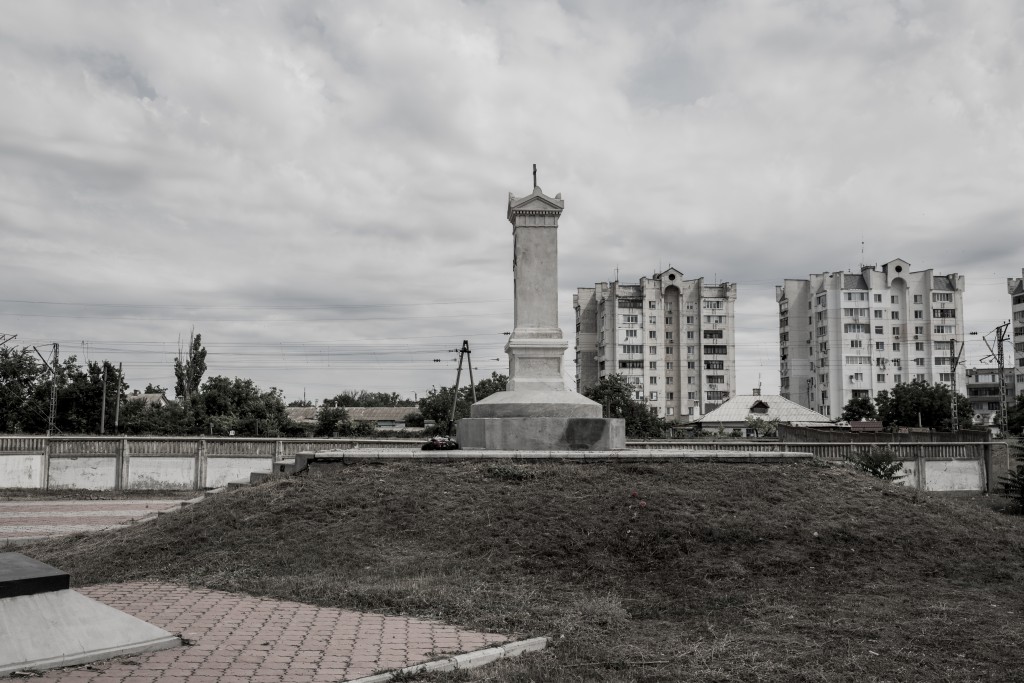
Monument dedicated to the memory of the Russians fallen during the Eupatoria battle (1855). On the same site, the left flank of the Russian Artillery was deployed at the time of the Crimean War. Inspired by a Colonel Vladislav Klembovsky’s photograph. Eupatoria, Crimea. 24 June 2014.
Fort Constantine. Sevastopol harbour. James Robertson/courtesy of Russian State Archives of Film and Photo Documents
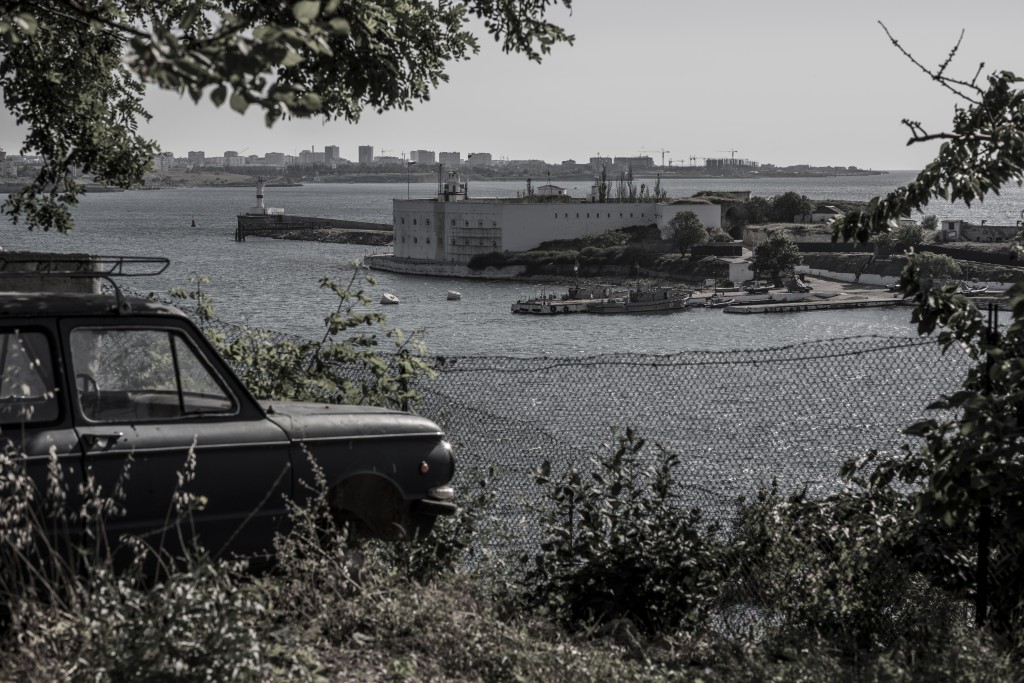
Fort Constantine, on the Northern side of Sevastopol’s harbour. Inspired by a Felice Beato’s photograph (signed James Robertson) of the Crimean War. Sevastopol, Crimea. 24 June 2014.
The Siege of Sevastopol.
The Panorama
This crucial episode of the Crimean War is the subject of one of the world’s biggest panoramas, visible today at the Defence of Sevastopol Museum.
This 360 degree painting is the work of Russian artist Franz A. Roubaud: in the foreground is a realistic reconstruction of the Russian batteries defending the Malakhov Mound at the time of the siege and in the background is the painted representation of salient moments of the battle.
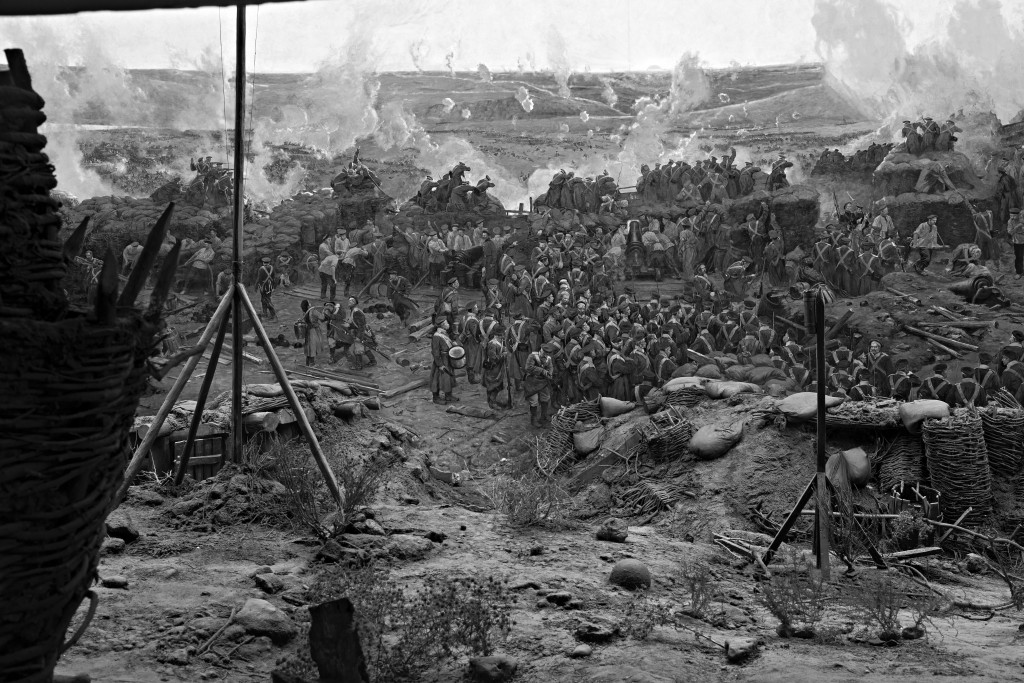
The Siege of Sevastopol during the Crimean War (1854-55) as represented in the Panorama by Franz A. Roubaud at the Defence of Sevastopol Museum. The Nikiforov battery is firing against the Allies as soldiers of the Poltava regiment are waiting for commands at the rear. Sevastopol, Crimea. 21 June 2014.
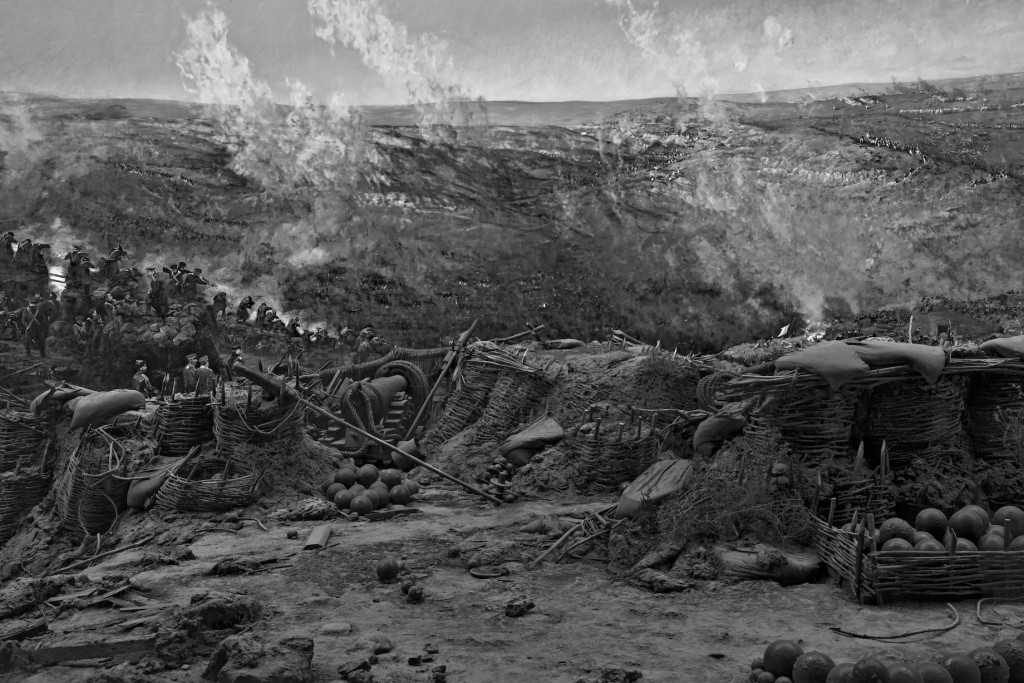
The Siege of Sevastopol during the Crimean War (1854-55) as represented in the Panorama by Franz A. Roubaud at the Defence of Sevastopol Museum.
In the background, the French flag is on Zherve battery and the French are attacking the Malakhov Mound. In the foreground is the Stanislavsky battery.
Sevastopol, Crimea. 21 June 2014.
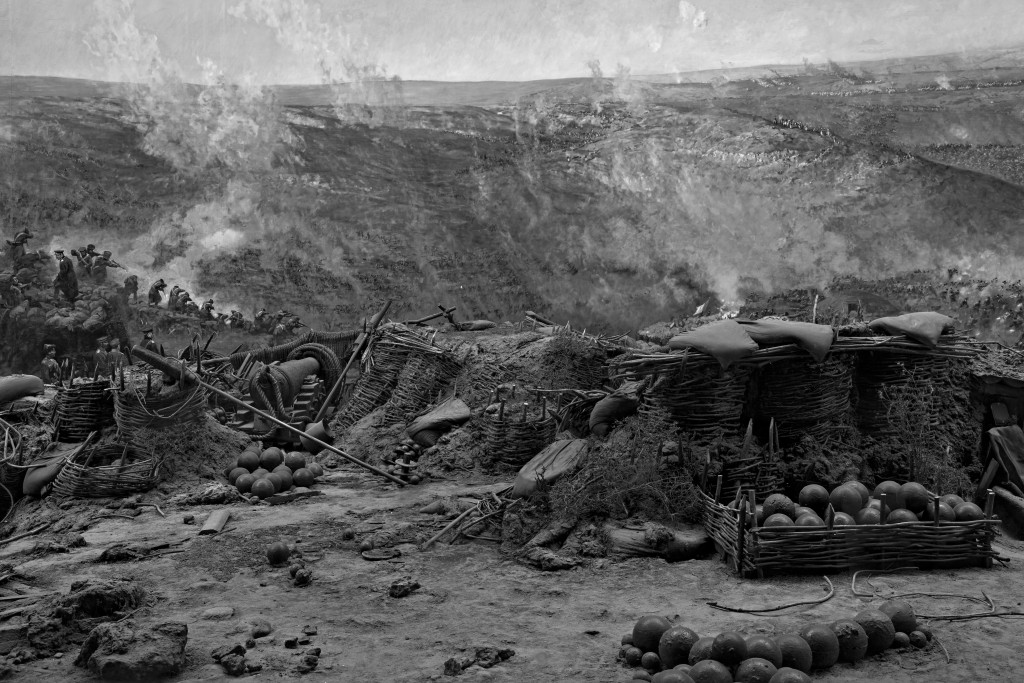
The Siege of Sevastopol during the Crimean War (1854-55) as represented in the Panorama by Franz A. Roubaud at the Defence of Sevastopol Museum.
In the background, the French flag is on Zherve battery and the French are attacking the Malakhov Mound. In the foreground is the Stanislavsky battery.
Sevastopol, Crimea. 21 June 2014.
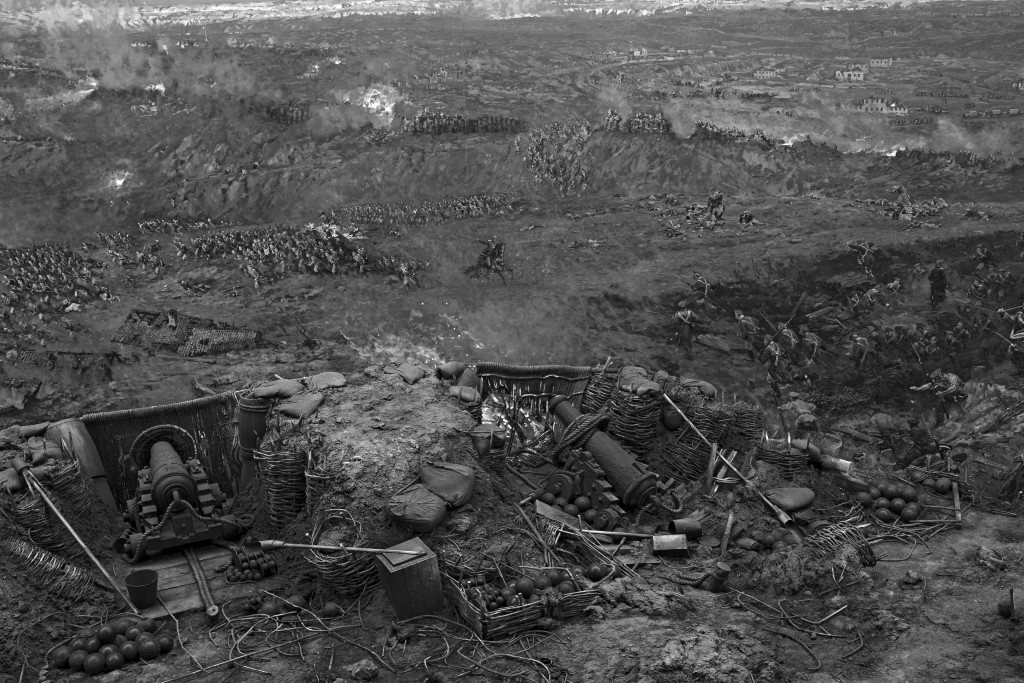
The Siege of Sevastopol during the Crimean War (1854-55) as represented in the Panorama by Franz A. Roubaud at the Defence of Sevastopol Museum.
The battle for the Zherve battery is raging. General S. Khrulev’s adjutant is galloping to the reserves. In the background, the third bastion (“Big Redan”) is being attacked by British troops.
Sevastopol, Crimea. 21 June 2014.
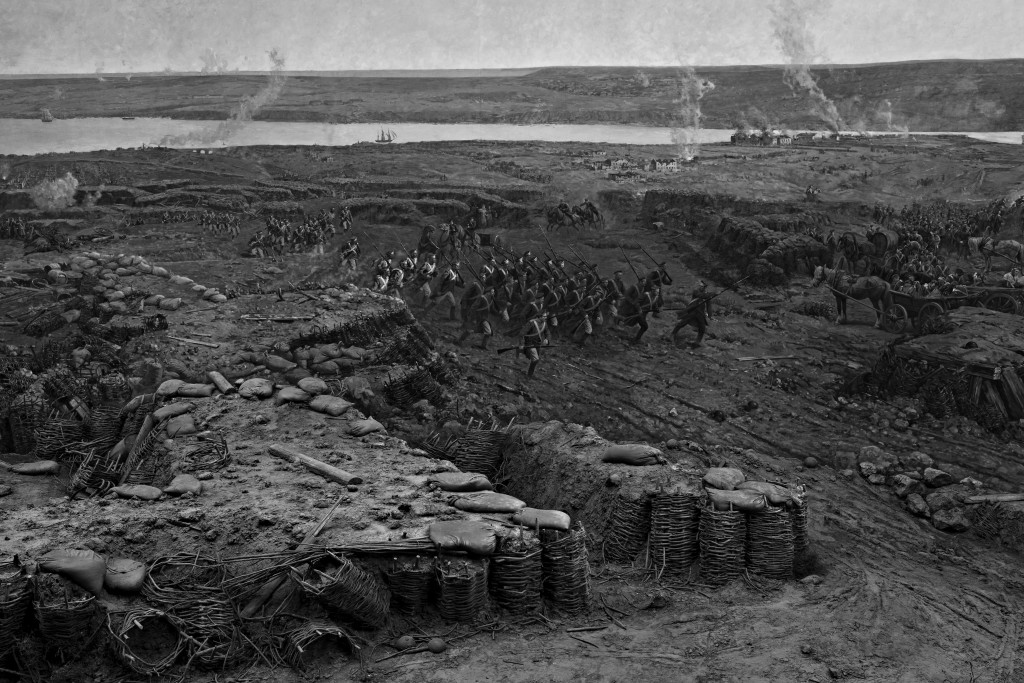
The Siege of Sevastopol during the Crimean War (1854-55) as represented in the Panorama by Franz A. Roubaud at the Defence of Sevastopol Museum.
Soldiers from the Chernigov regiment are running to help the defenders of the Malakhov Mound. On the Big bay’s shore, the Russians have just repelled the French attacks to the first bastion, supported by the artillery fire of Russian steamships.
Sevastopol, Crimea. 21 June 2014.
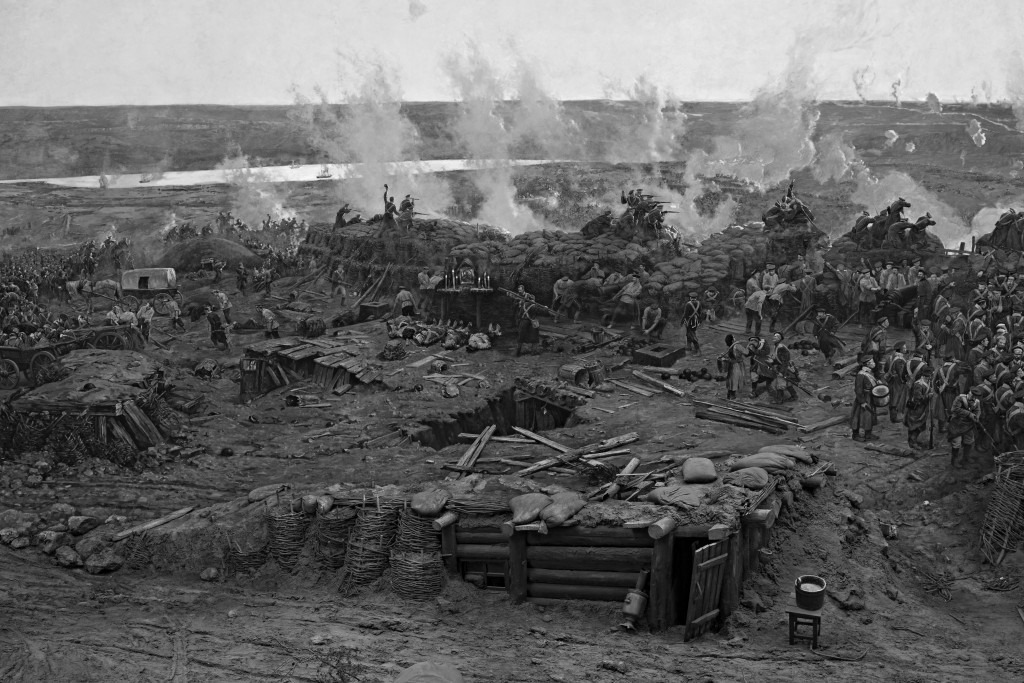
The Siege of Sevastopol during the Crimean War (1854-55) as represented in the Panorama by Franz A. Roubaud at the Defence of Sevastopol Museum.
The bodies of several Russian soldiers lie in front of an icon, as the Nikiforov battery soldiers repel a French attack.
Sevastopol, Crimea. 21 June 2014.
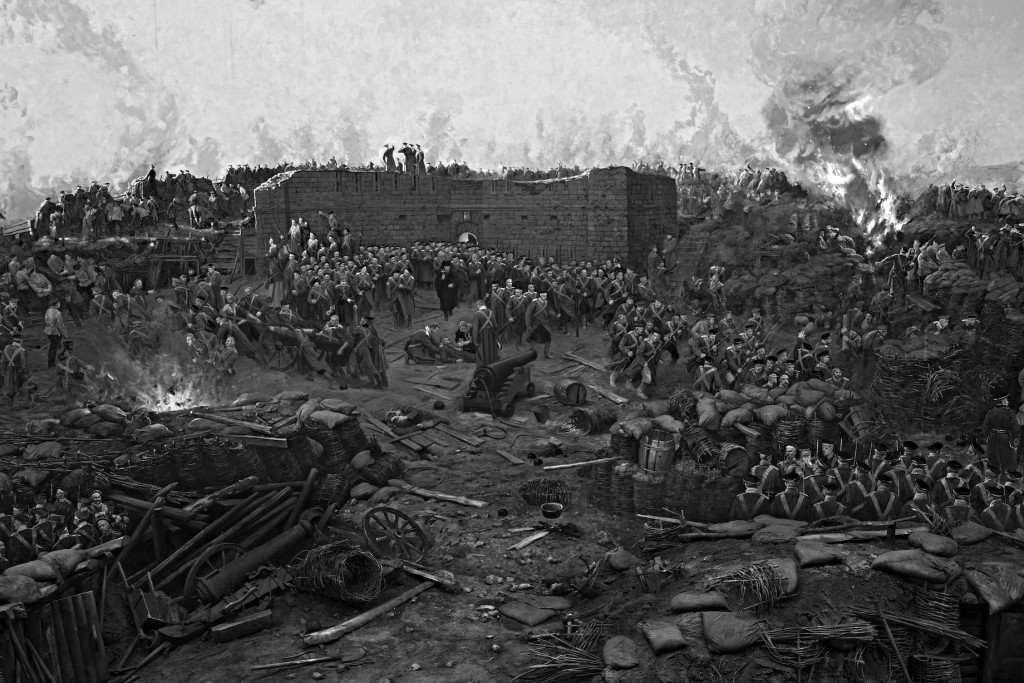
The Siege of Sevastopol during the Crimean War (1854-55) as represented in the Panorama by Franz A. Roubaud at the Defence of Sevastopol Museum.
An Allied bomb explodes to the right of the Defence tower.
Sevastopol, Crimea. 21 June 2014.
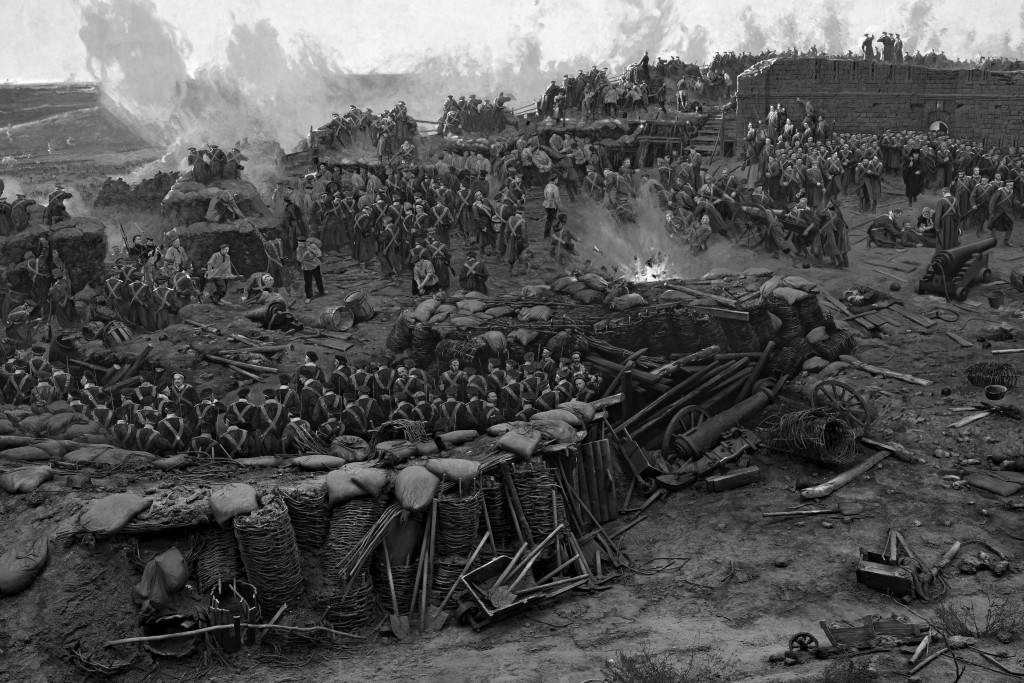
The Siege of Sevastopol during the Crimean War (1854-55) as represented in the Panorama by Franz A. Roubaud at the Defence of Sevastopol Museum.
Russians battery by the Defence tower during an Allied attack.
Sevastopol, Crimea. 21 June 2014.
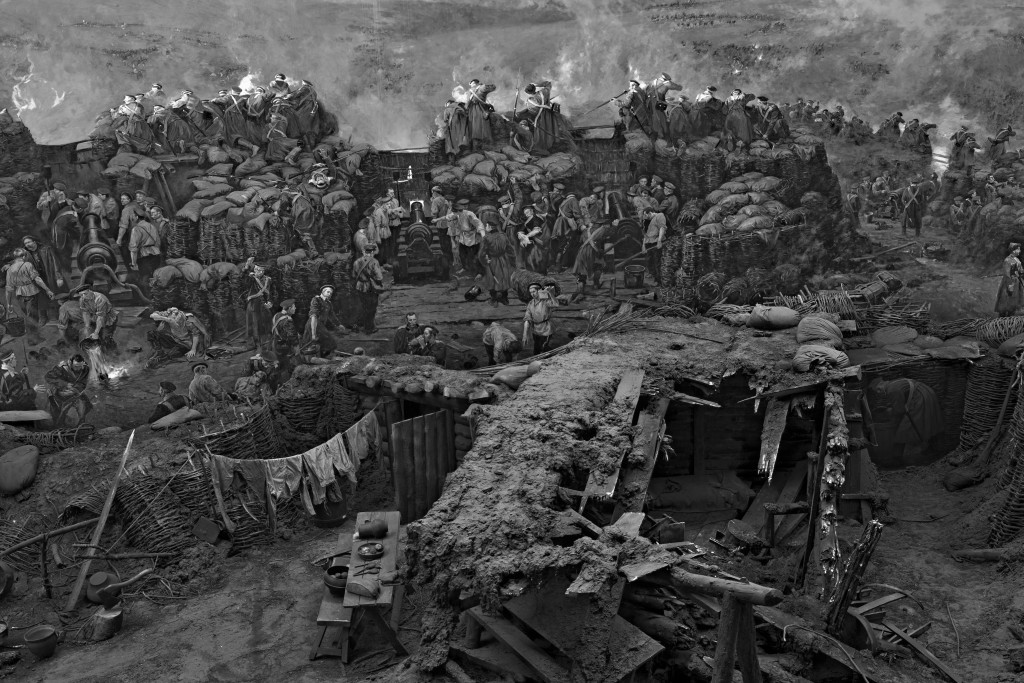
The Siege of Sevastopol during the Crimean War (1854-55) as represented in the Panorama by Franz A. Roubaud at the Defence of Sevastopol Museum.
A destroyed officer dug-out and galley can be seen behind the firing Senyavin battery, as French troops are attacking the right flank of the Malakohov Mound in the distance.
Sevastopol, Crimea. 21 June 2014.
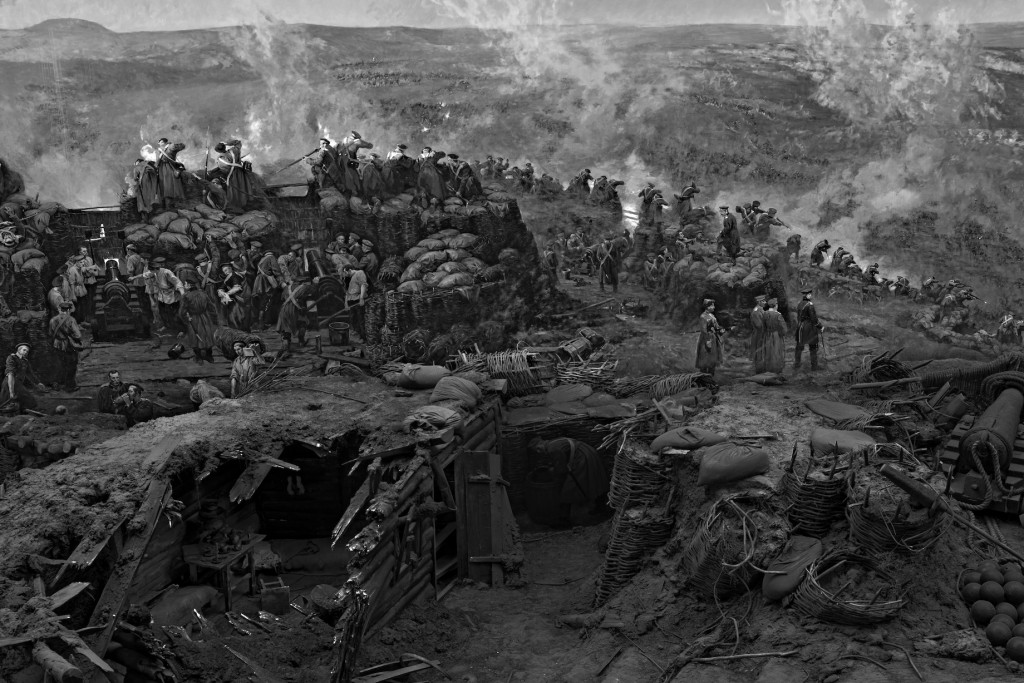
The Siege of Sevastopol during the Crimean War (1854-55) as represented in the Panorama by Franz A. Roubaud at the Defence of Sevastopol Museum.
The French soldiers are attacking the Malakhov Mound as the Russians strive to push them back. In the foreground is the Stanislavsky battery.
Sevastopol, Crimea, Russian federation. 21 June 2014.
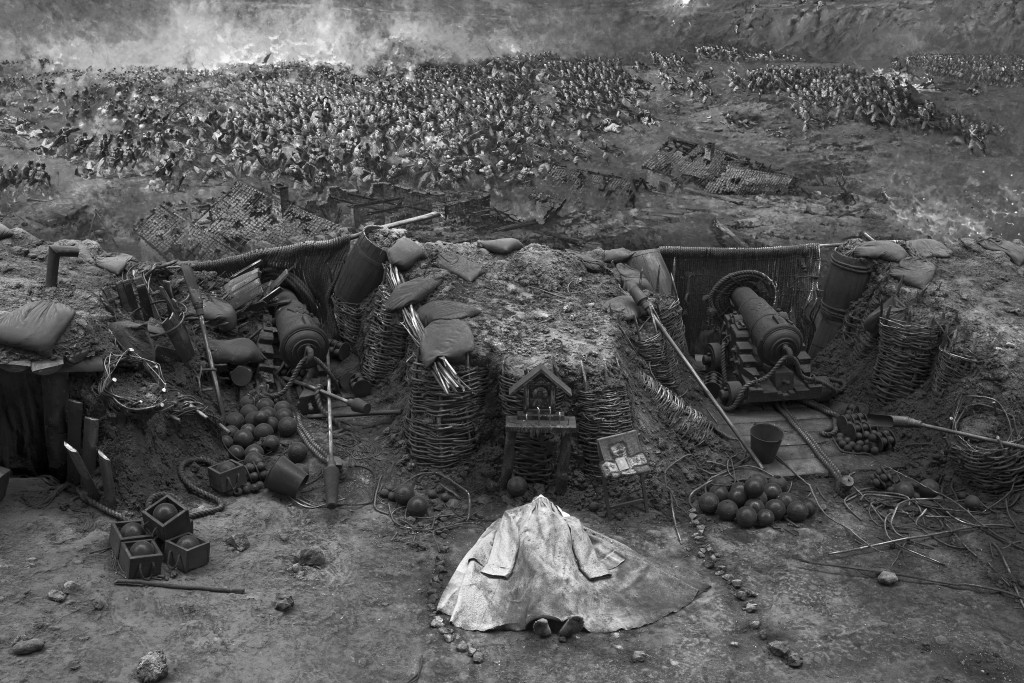
The Siege of Sevastopol during the Crimean War (1854-55) as represented in the Panorama by Franz A. Roubaud at the Defence of Sevastopol Museum.
The body of a dead Russian soldier rests in front of an icon as the battle for the Zherve battery is raging. In the background, the third bastion (“Big Redan”) is being attacked by British troops.
Sevastopol, Crimea. 21 June 2014.
Portraits
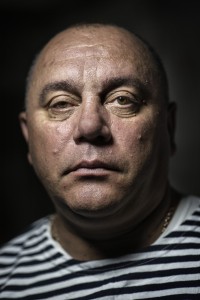
Aleksandr Schipancov, 50, from Amurskaya Oblast, Blagoveshnsk. Military. Visitor of the Panorama at the Defence of Sevastopol Museum. Sevastopol, Crimea, Russian federation. 21 June 2014.
The impact of the panorama in conveying the truthfulness of the tragic events is so powerful on visitors that signs of distress can be seen on their faces at the end of the tour. What photography could not achieve due to the limitations of the collodion process has been obtained through a painted reconstruction of events. This is a sure sign of the power of visual storytelling.
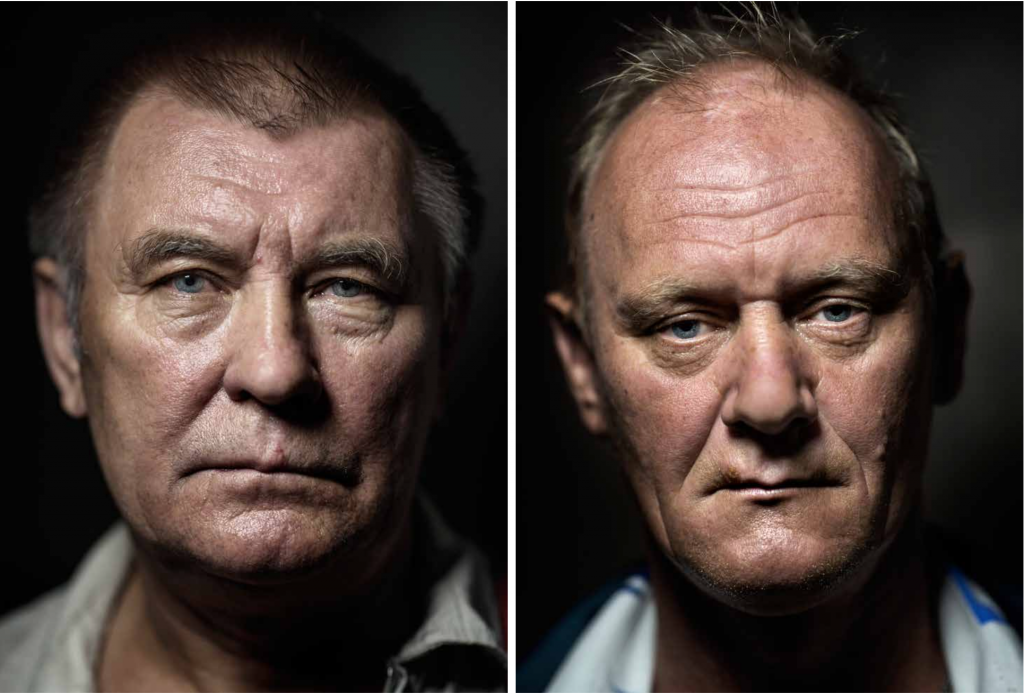
Aleksandr Schipancov, 50, from Amurskaya Oblast, Blagoveshnsk. Military. Visitor of the Panorama at the Defence of Sevastopol Museum. Sevastopol, Crimea, Russian federation. 21 June 2014.
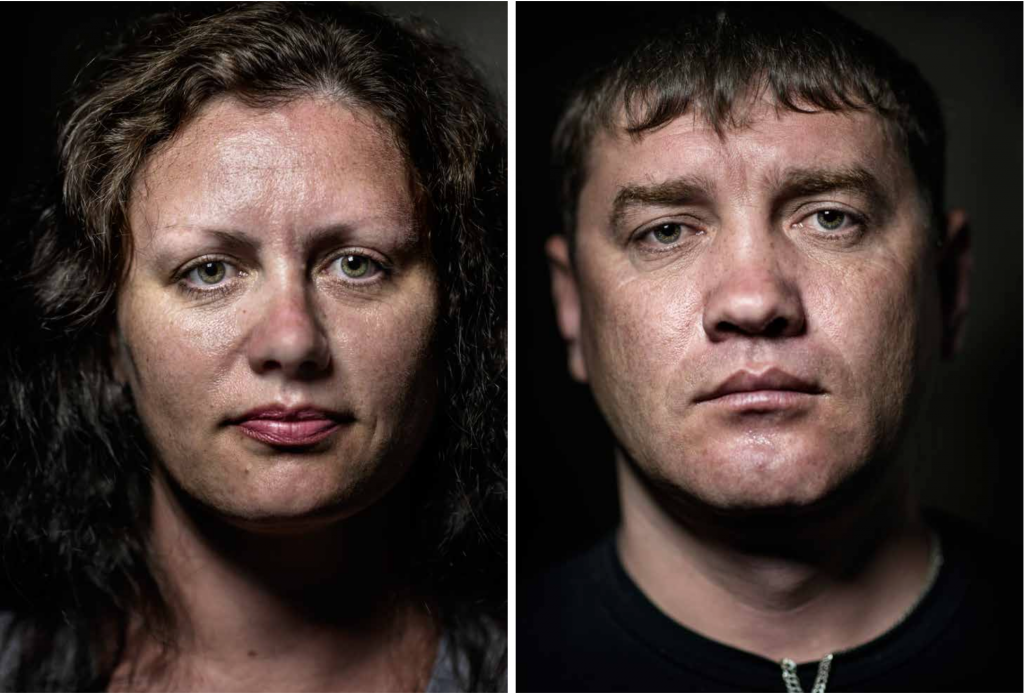
Left: Elena Kochetkova, 42, prosecutor.
Right: Alexander Lobanov, 37, from Salehard, civil servant
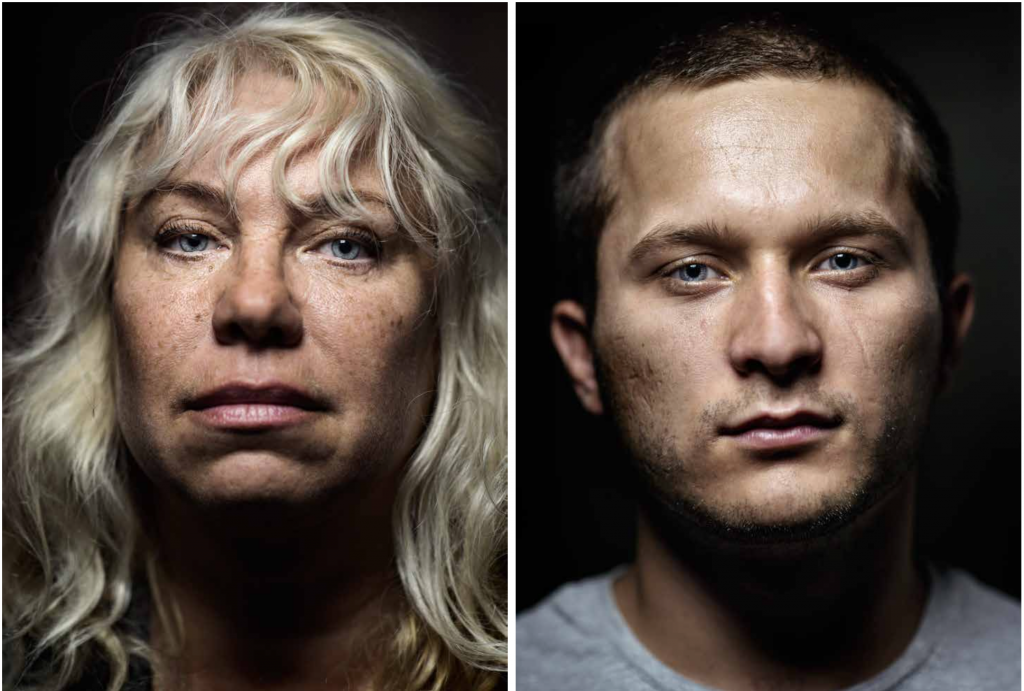
Left: Tatiana Bilyk, 45, from Moscow, nurse
Right: Nikolay Bazenko, 24, from Krasnodar region, Slaviansk-na-Kubani, worker.
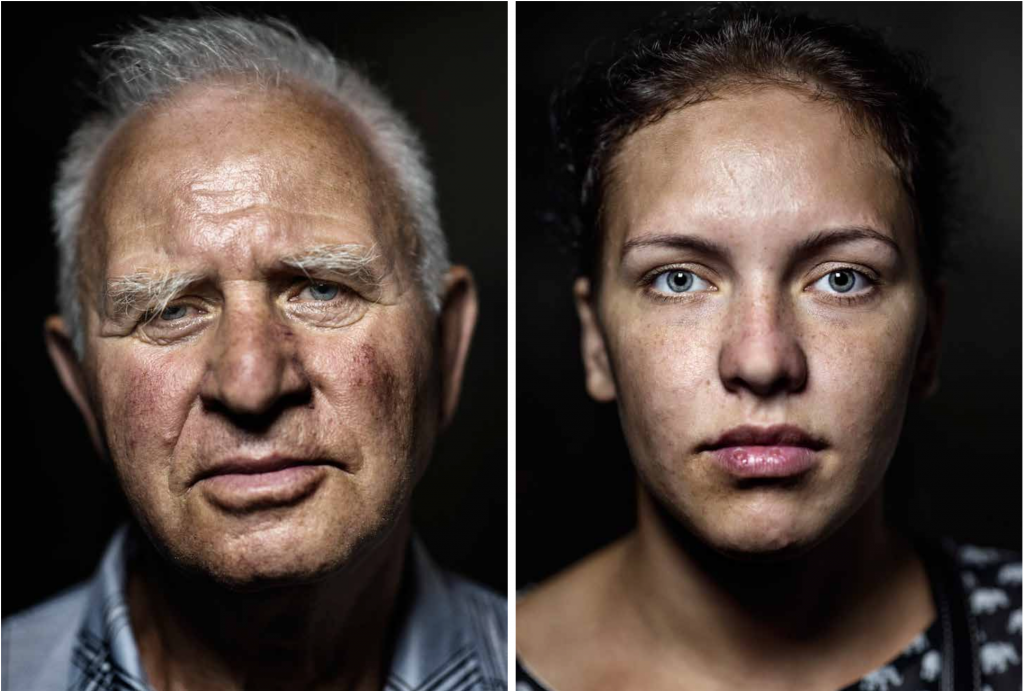
Left: Nikolay Pilipenko, 70, retired Atomic Combinat and member of the Ukrainian Parliament (Rada).
Right: Victoria Stepanova, 21, from Kaliningrad, unemployed.
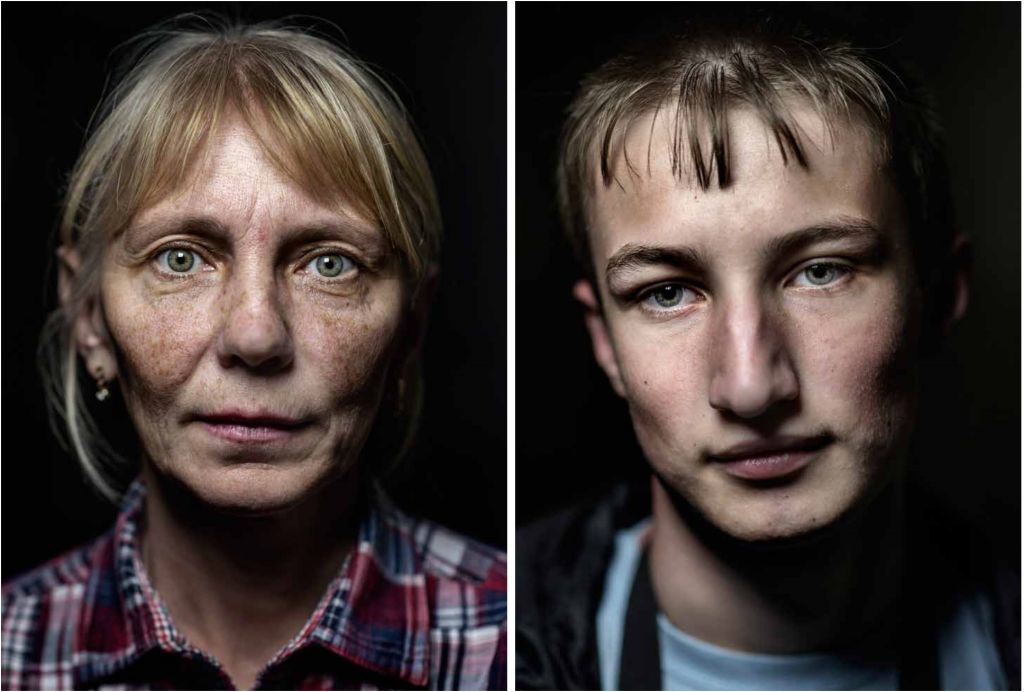
Left: Anna Gorbacheva, 49, from Omsk, Engeneer.
Right: Maxim Larionov, 14, from Moscow, Student.
Today’s Crimea
This selection of black and white photos portrays the ordinary life of Crimean citizens as they pass through the sites of past battles, tragedies and heroic gestures. They may be oblivious to the ghosts of the past, but the land retains its marks, and solitary monuments still have a story to tell to those who are willing to stop and consider their legacy.
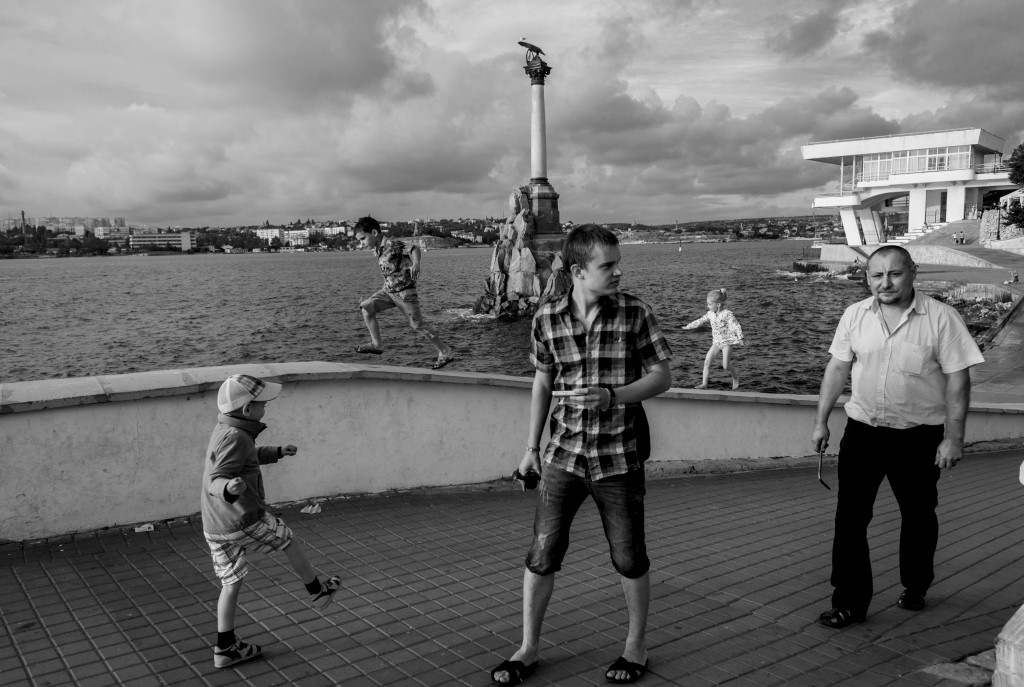
The harbour of Sevastopol. The quay near the Monument to the sunken ships.Crimea , 18 June 2014.
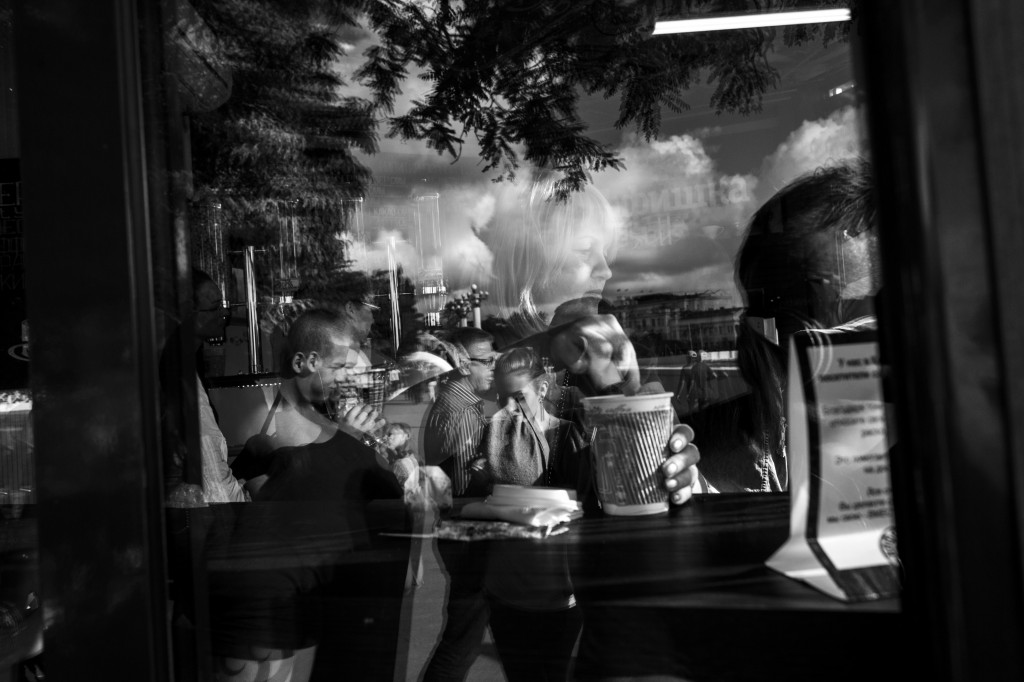
Bar in Sevastopоl.
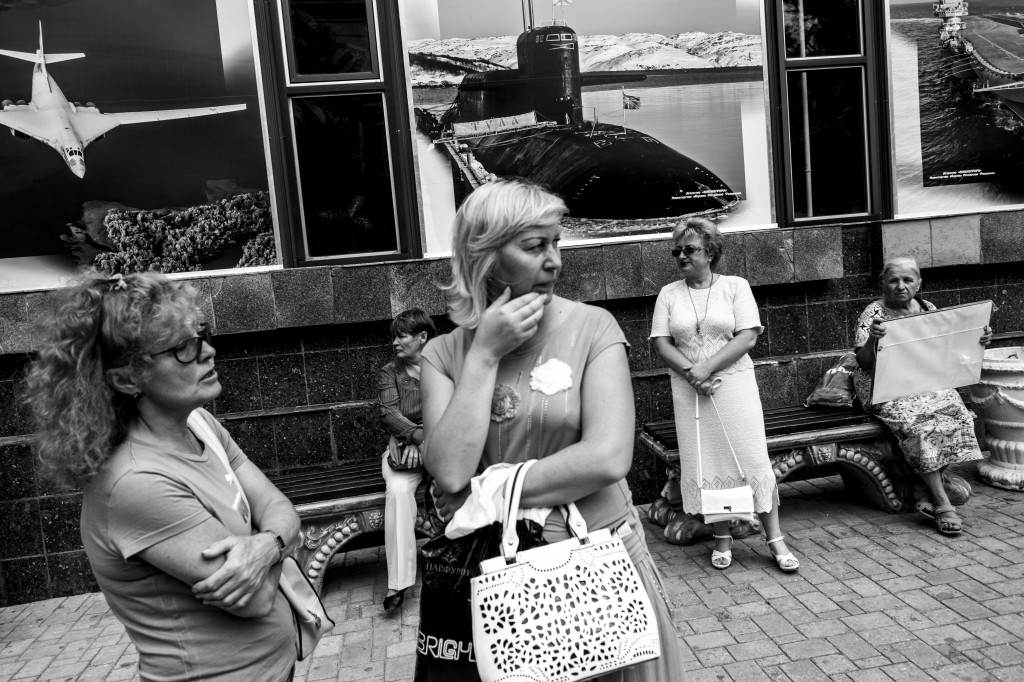
Sevastopol downtown.
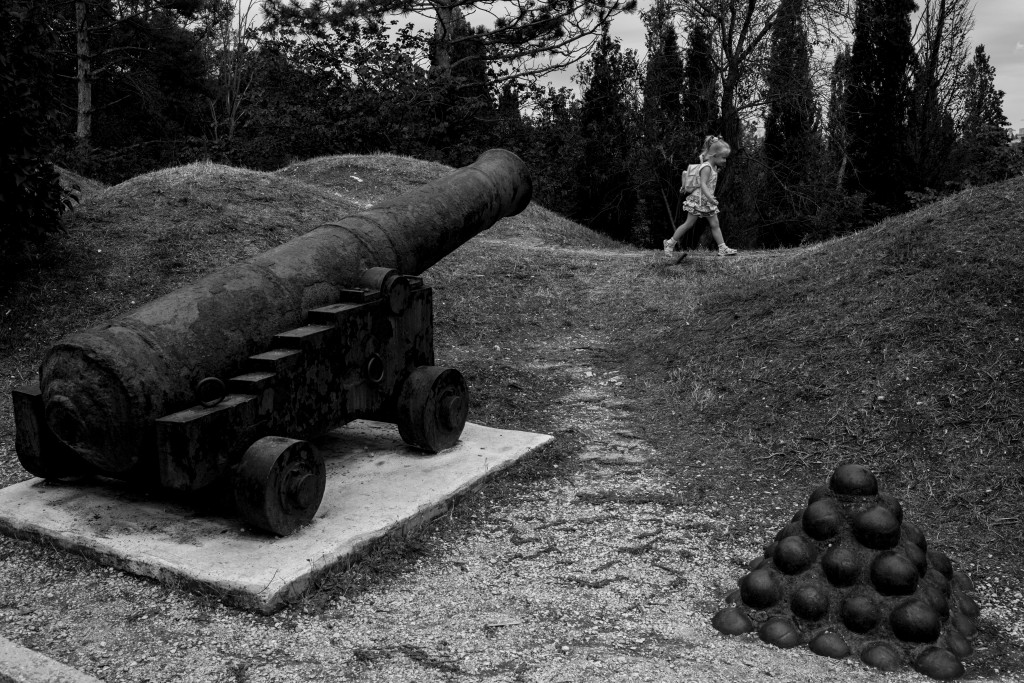
An original cannon from the Crimean War rests in the site of a memrial complex dedicated to the Malakhov Bastion, one of the main command posts of the Russian Army during the Siege of Sevastopol (1854-55). Sevastopol, Crimea, 21 June 2014.
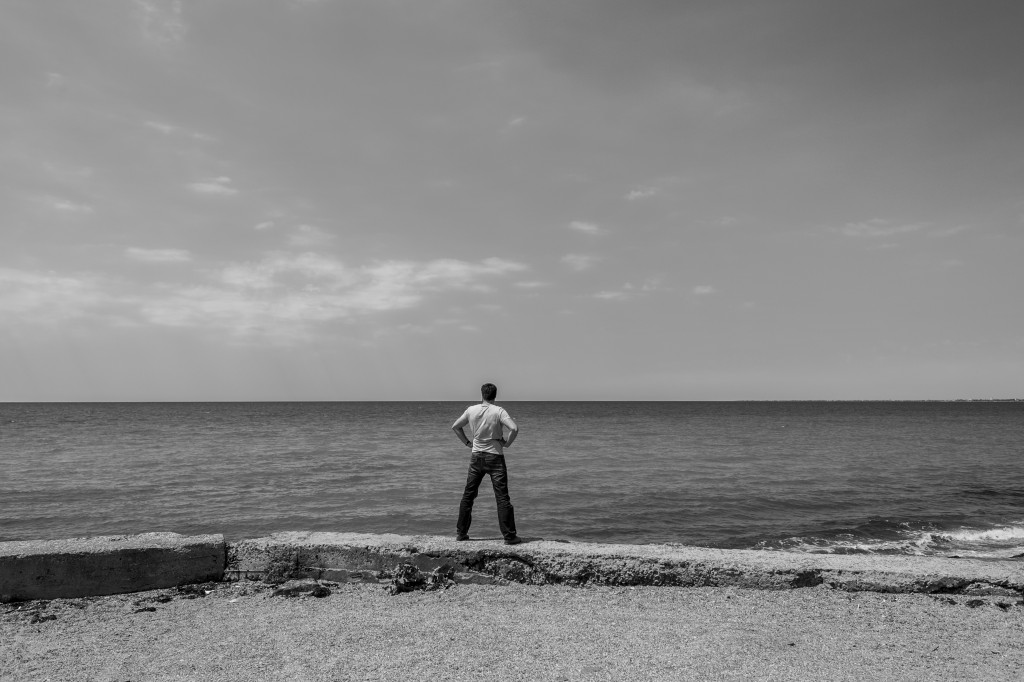
A man looks out at sea near the beach in Calamita Bay (35 km North of Sevastopol) where the French troops landed in September 1854, during the Crimean War. Crimea, 24 June 2014.
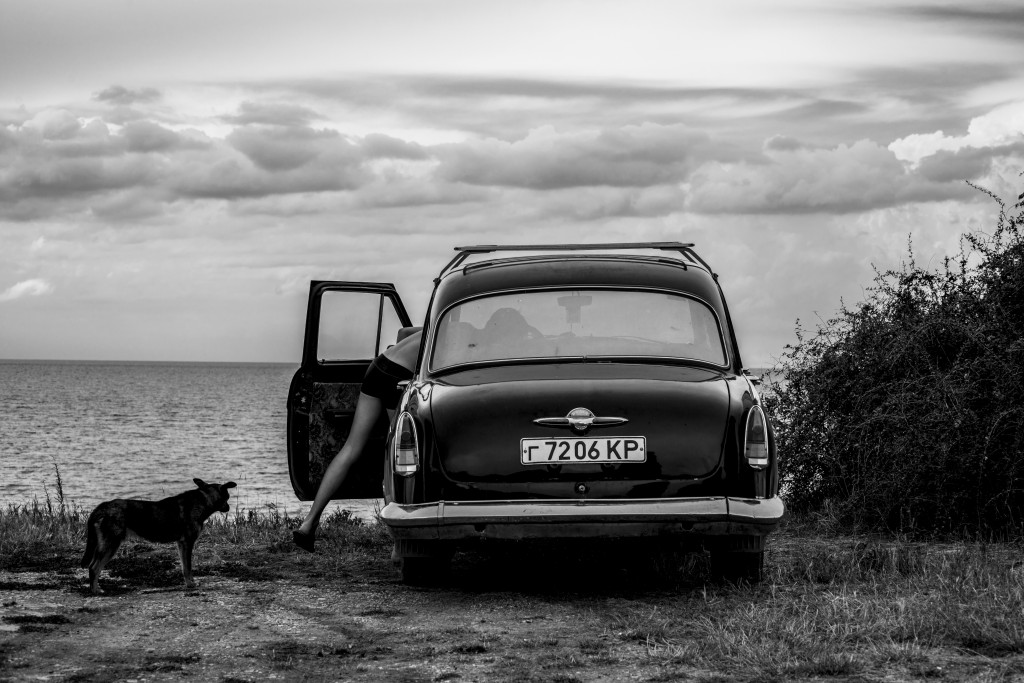
A car parked by the beach in Calamita Bay (35 km North of Sevastopol) where the British troops landed in September 1854, during the Crimean War. Crimea, 20 June 2014.
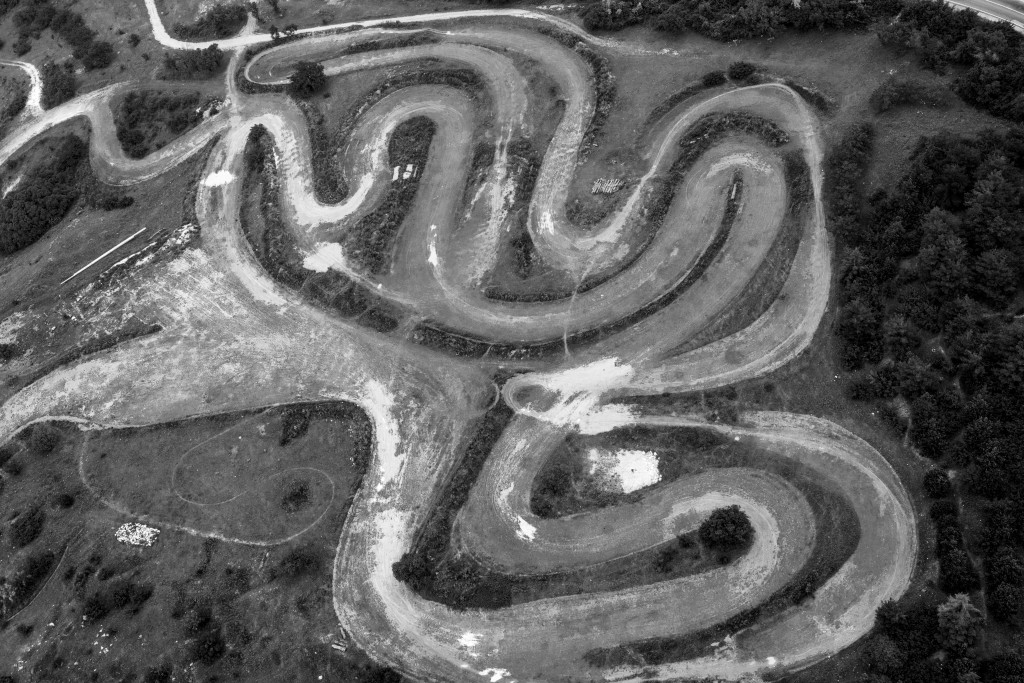
Aerial view of the Crimean countryside between Sevastopol and Balaklava. Crimea, 22 June 2014.
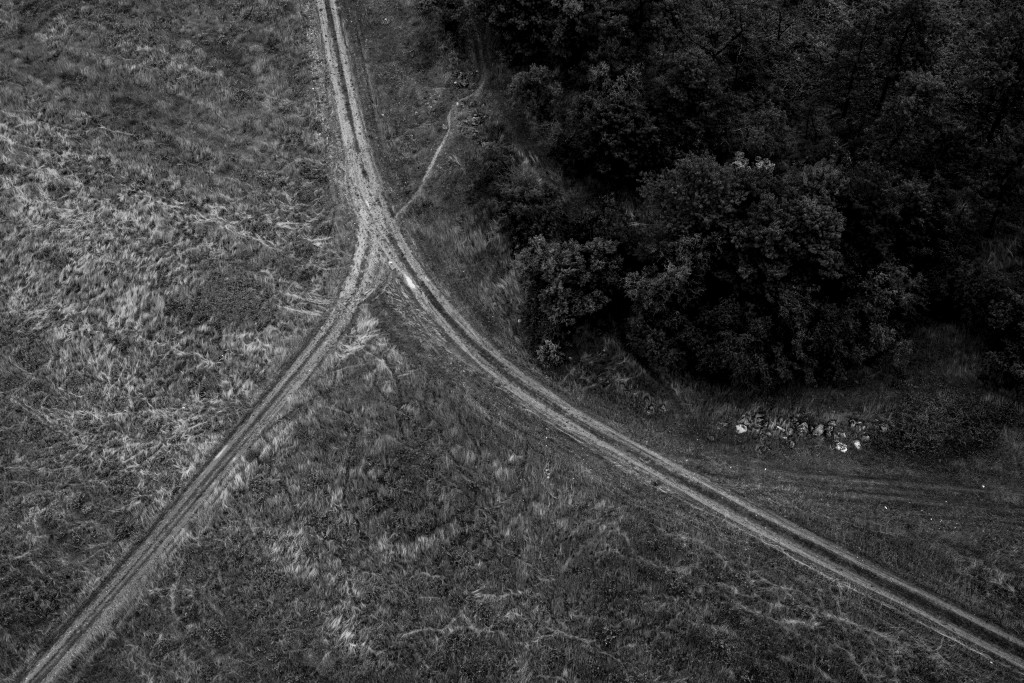
Aerial view of the Crimean countryside between Sevastopol and Balaklava. Crimea, 22 June 2014.
